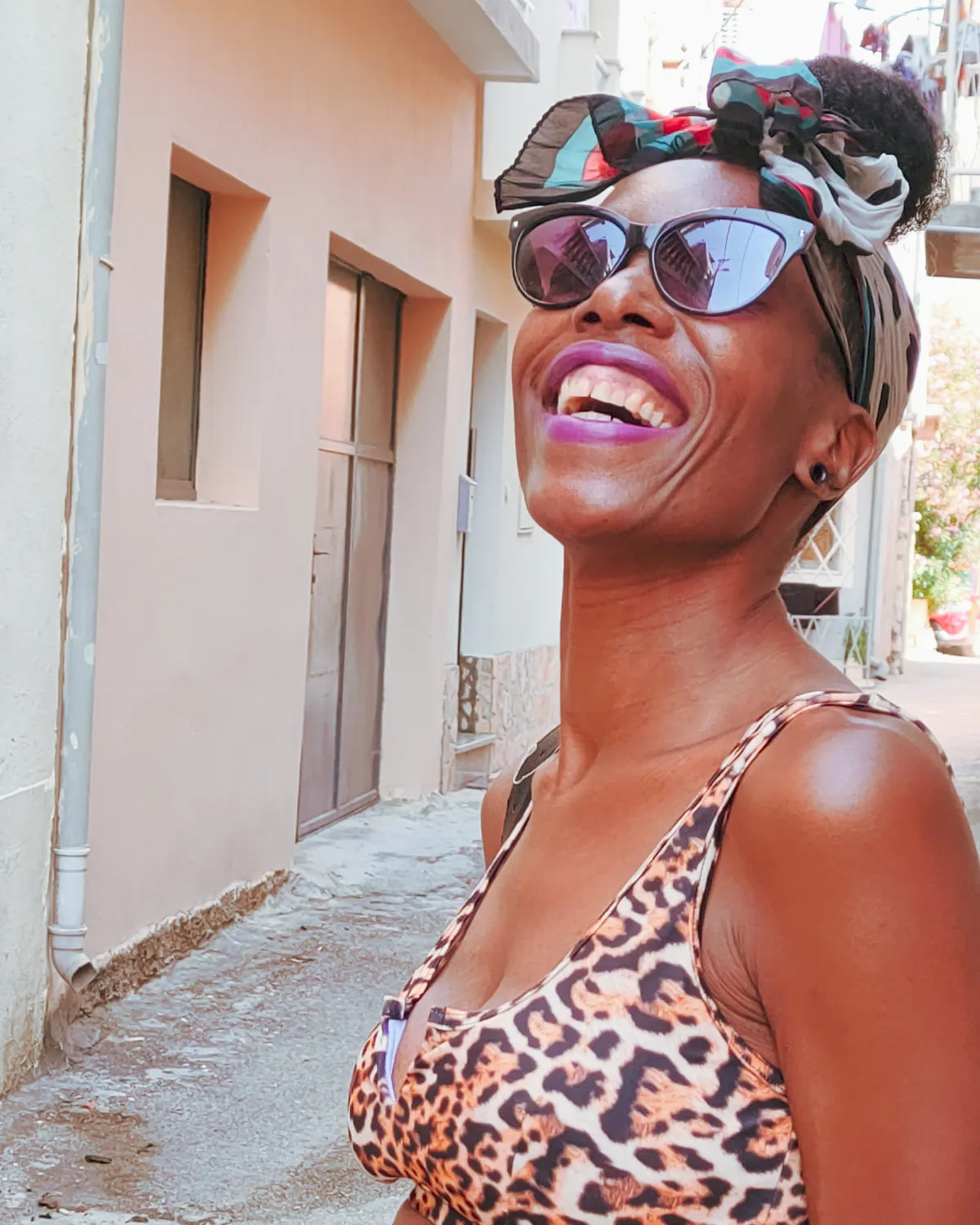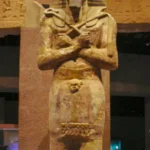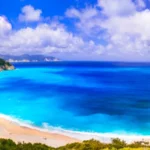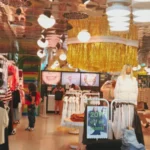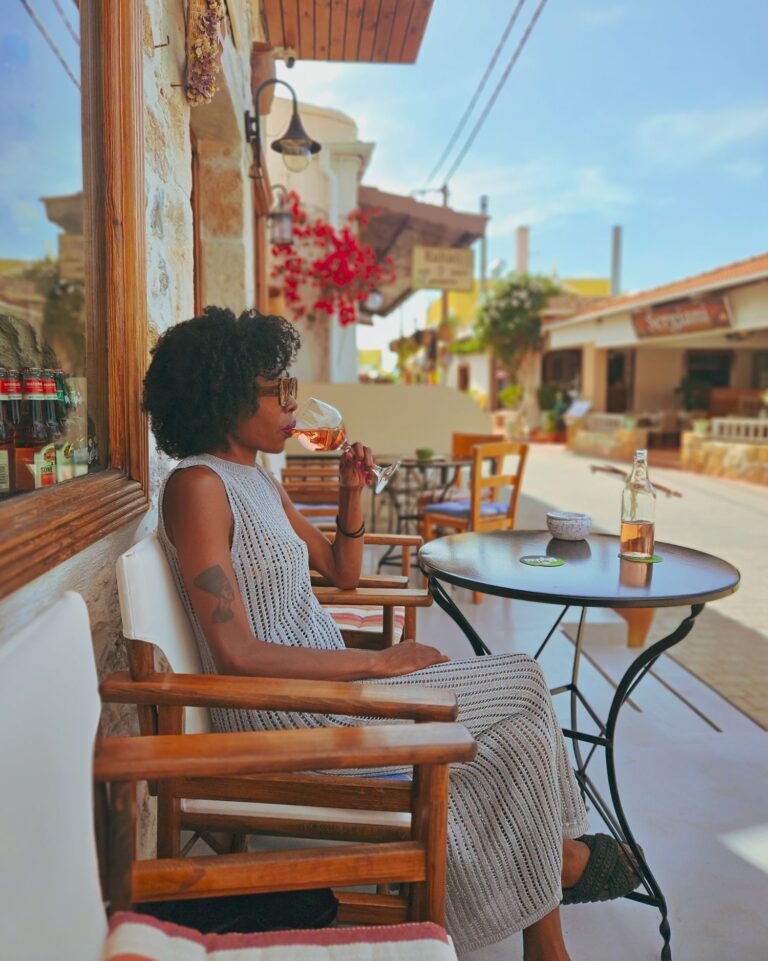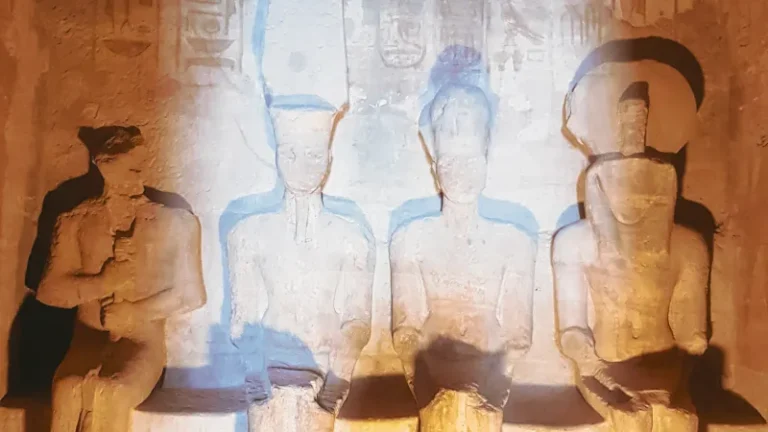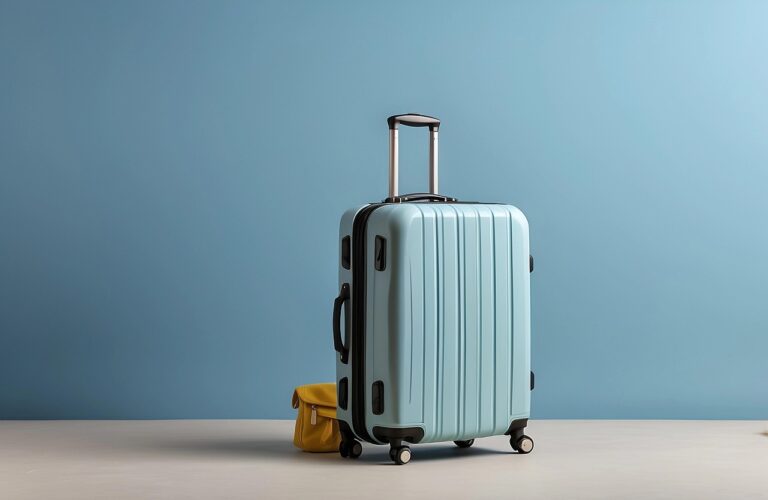Though Rio is the first place that comes to mind for most at the mention of Brazil, I have long wanted to visit Bahia. It’s unique and where Brazil started, yet is often overlooked on the tourist’s itinerary, or Salvador visited for just a few days. I got to fulfil my dream and visited recently, but did it live up to my expectations. Is Bahia worth visiting? Before deciding, let’s take a look at its history.
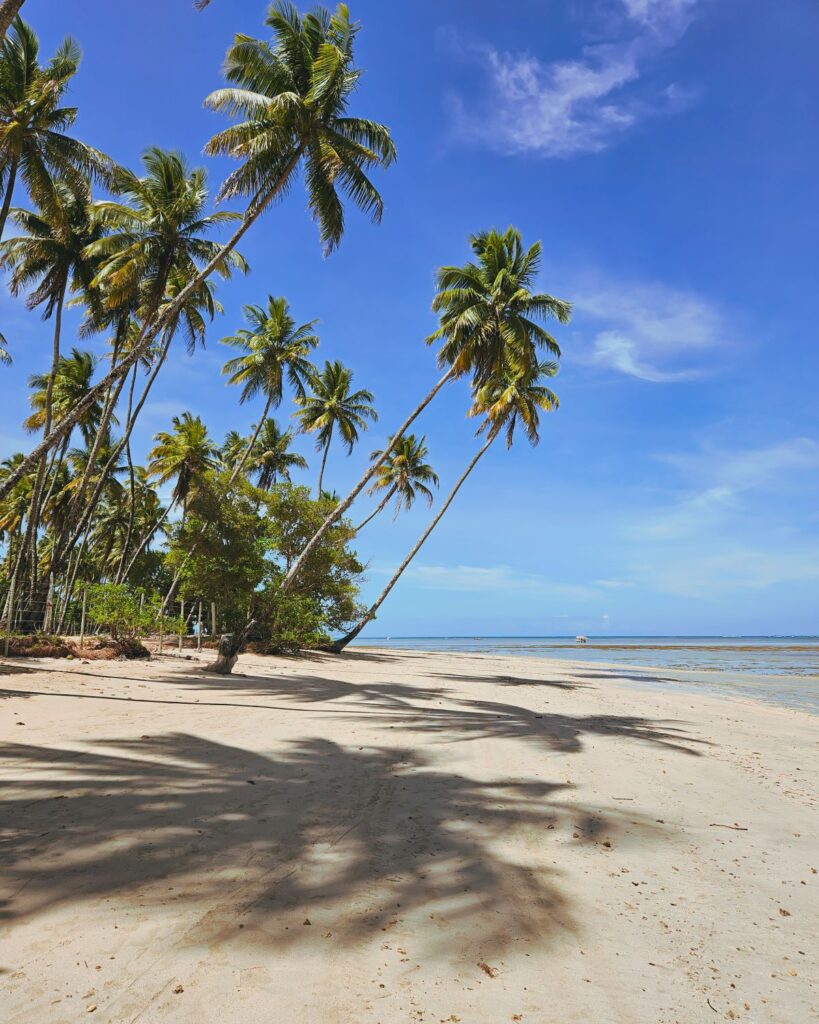
The Backstory
Located in the northeast of Brazil, Bahia was one of the first colonial cities in the Americas, and Salvador was the country’s first capital.
Brazil was the largest importer of enslaved Africans during the transatlantic slave trade, and around 40% of Africans transported came here to toil the plantations, with Bahia being the entrance point.
Salvador
As Salvador was a major centre for the African slave trade, more than 80% of the population have African ancestry. Salvador therefore has one of the largest concentrations of black people in Brazil, is the heart of the Afro-Brazilian community and is the most African city outside of Africa.
There is something special about this part of Brazil. There’s no other place where the culture of Africans shipped over during the transatlantic slave trade has been preserved to the extent it has in Salvador – from music and religion to food, dance and martial arts traditions.
Part of my stay was in Salvador, just outside the historic centre – Pelourinho. Salvador is two cities within a city and split into two areas:
o Cidade Alta (upper city)
o Cidade Baixa (lower city)
The Lacerda Elevator connects both levels of the city. You will spend most of your time in the upper city.
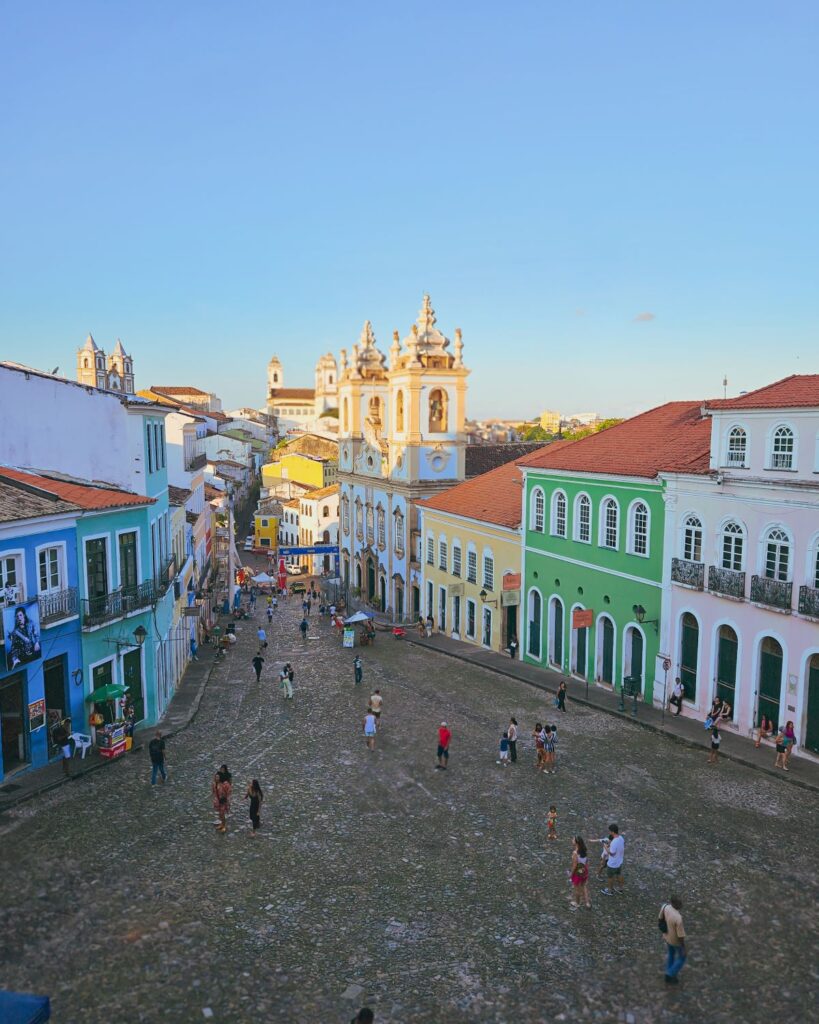
The Historic Centre – Pelourinho
Located in the upper city of Salvador and affectionately nicknamed Pelo by locals, the Pelourinho consists of several blocks and is the historic centre of Salvador (Centro Histórico). The area is vibrant and adorned with colourful colonial buildings, and following a major restoration in the 90s, it became a main tourist area.
Though colourful, the Pelourinho’s history is not so bright. The area was the old slave auction location, and Pelourinho means whipping post in Portuguese. It is here where slaves were tied to and punished.
It is no coincidence that Michael Jackson filmed much of his video “They Don’t Care About Us” in the main square of the Pelourinho with Olodum (he didn’t just want to Moonwalk there!). Visitors can go up to the balcony where he stood and take a photo with a poster of him.
Many of the huge cathedrals and mansions in the area were built by enslaved Africans (God’s will, right?! *eye roll*), and there are more than 365 Catholic churches in Salvador. However, it’s only The Church of the Third Order of Our Lady of the Rosary of the Black People in the Pelourinho area that they were allowed to attend and consequently why it is strategically positioned low down, whereas the rest are high up.
Afro-Brazilian Mass occurs at The Church of the Third Order of Our Lady of the Rosary of the Black People on Sundays and Tuesdays.
The Pelourinho has a place on the National Historic Register and is a UNESCO heritage site.
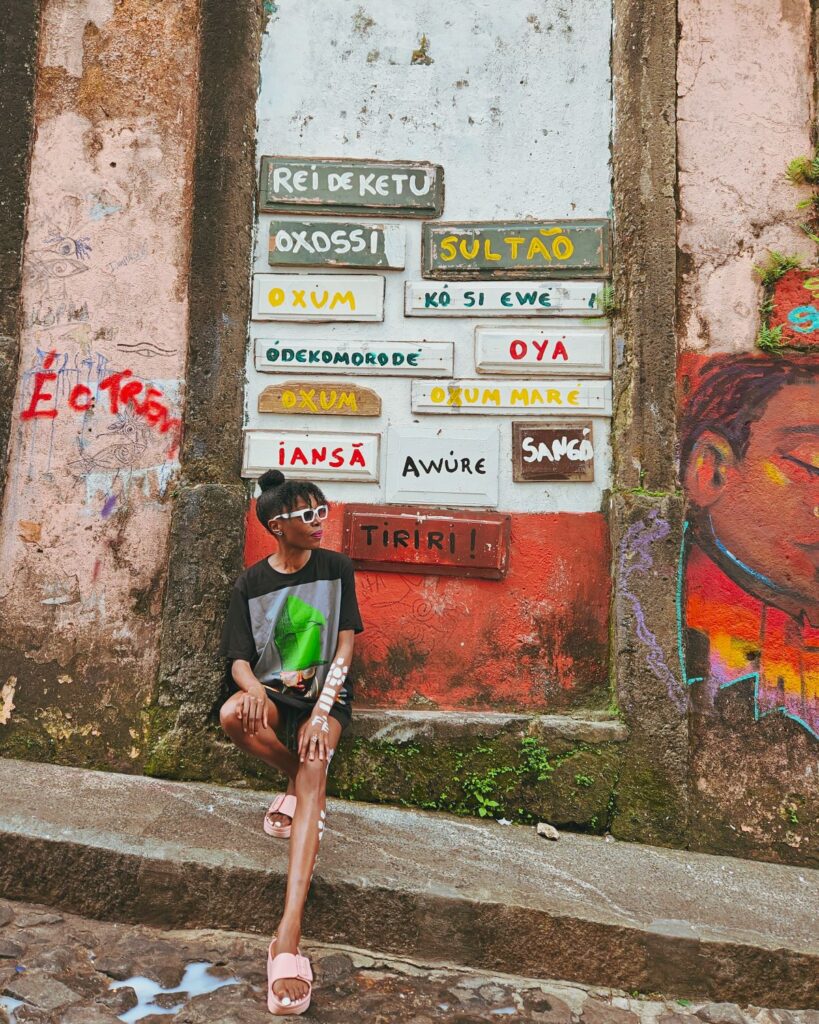
Getting about
Uber is available, safe, reliable, cheap and the best way to get about. There are buses, but as Uber is so cheap, Uber is to be the best option.
Is Salvador, Bahia safe?
Yes. It’s as safe as most capital cities when you use common sense and don’t flash your cash or bling. In any event, the Pelourinho is policed, but beaches have a reputation for pickpockets, so keep valuables safe. That said, I had no problems and felt safe at all times.
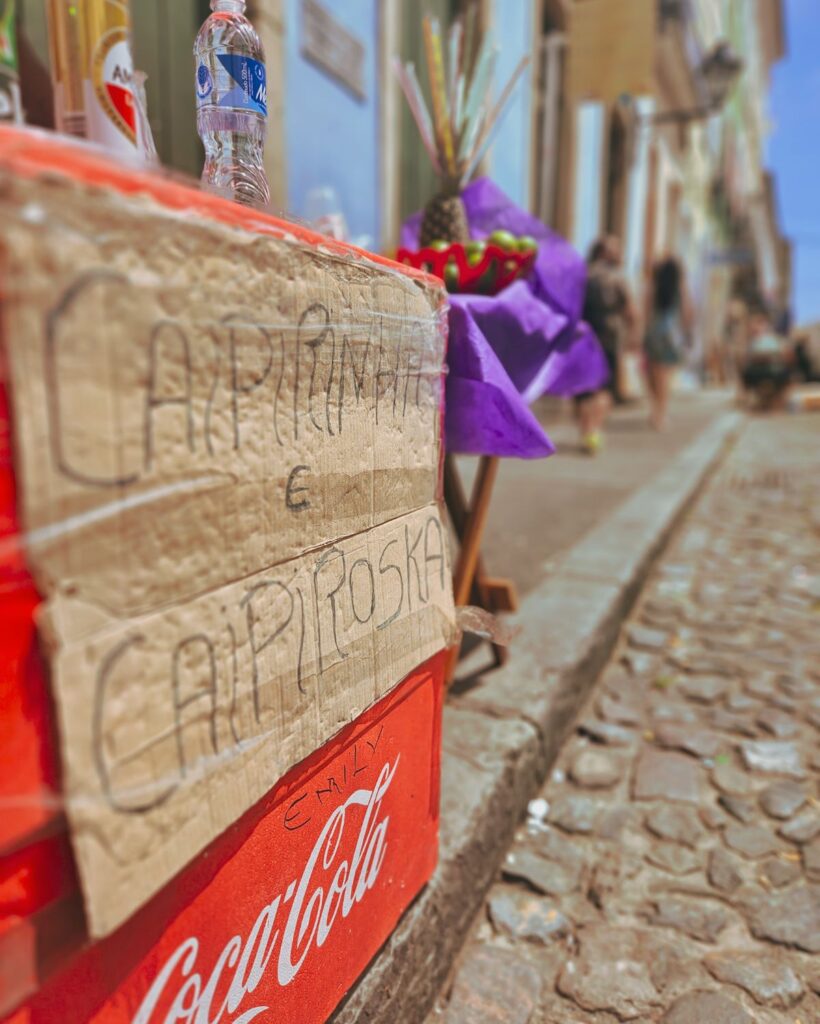
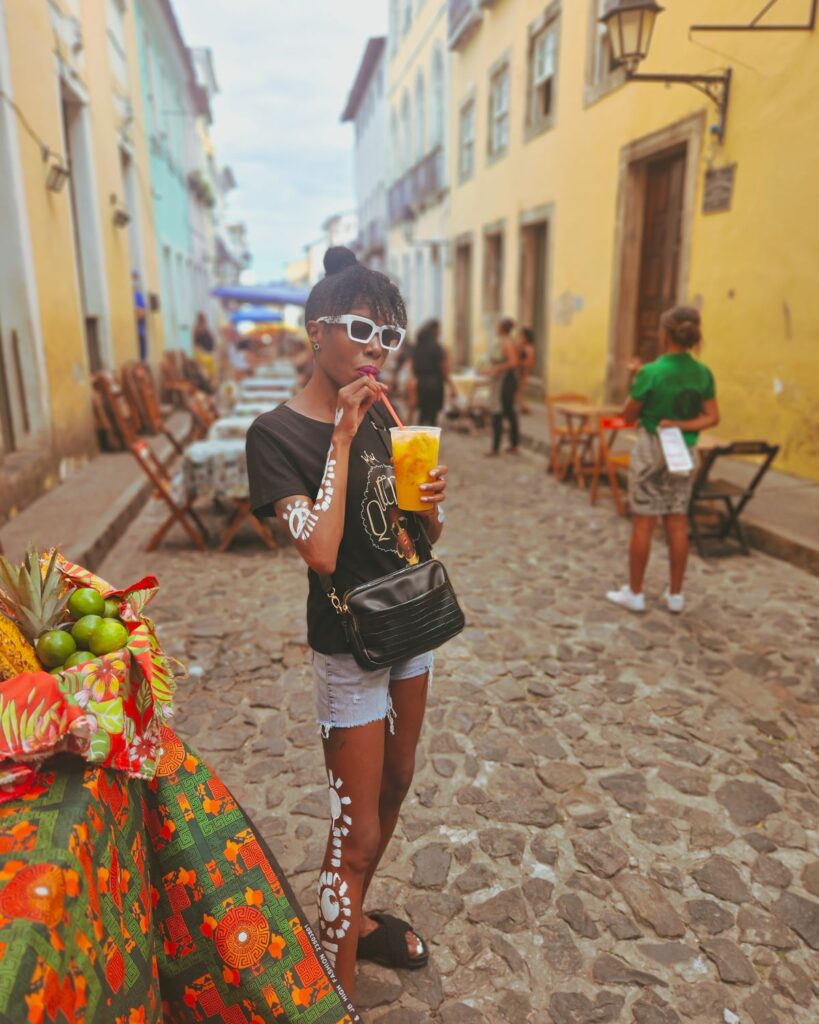
Things to do in Salvador
You can’t be in Salvador and not aimlessly wander the cobbles of the Pelourinho. It’s the culture capital and has something of intrigue around every corner – street art, museums, shops, capoeira performers, drummers and caipirinhas, which I drank my body weight in.
As you may already know, caipirinha is a Brazilian cocktail, but Bahia does it differently. Try one with added fruits, seriguela and biri biri – delicioso!
Samba, Capoeira, and Candomblé are three Brazilian cultural staples from Black Brazilians, and drums are the heartbeat of Salvador, especially in the Pelourinho area, where you’ll be drawn to its beat.
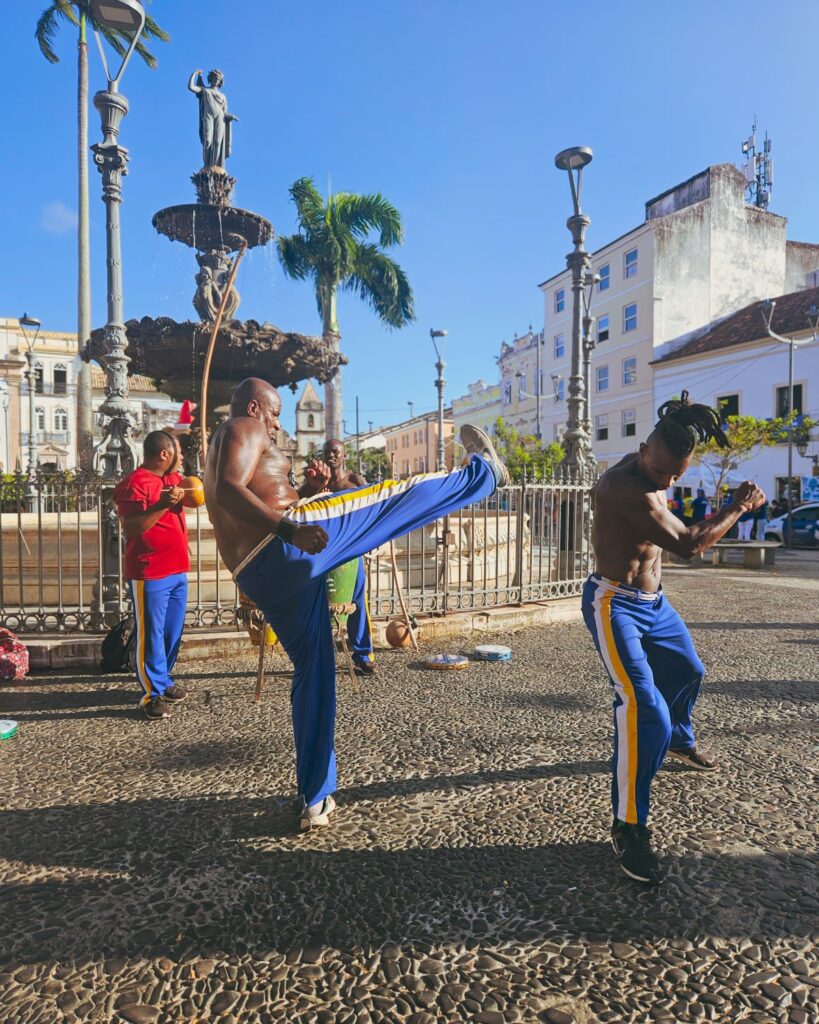
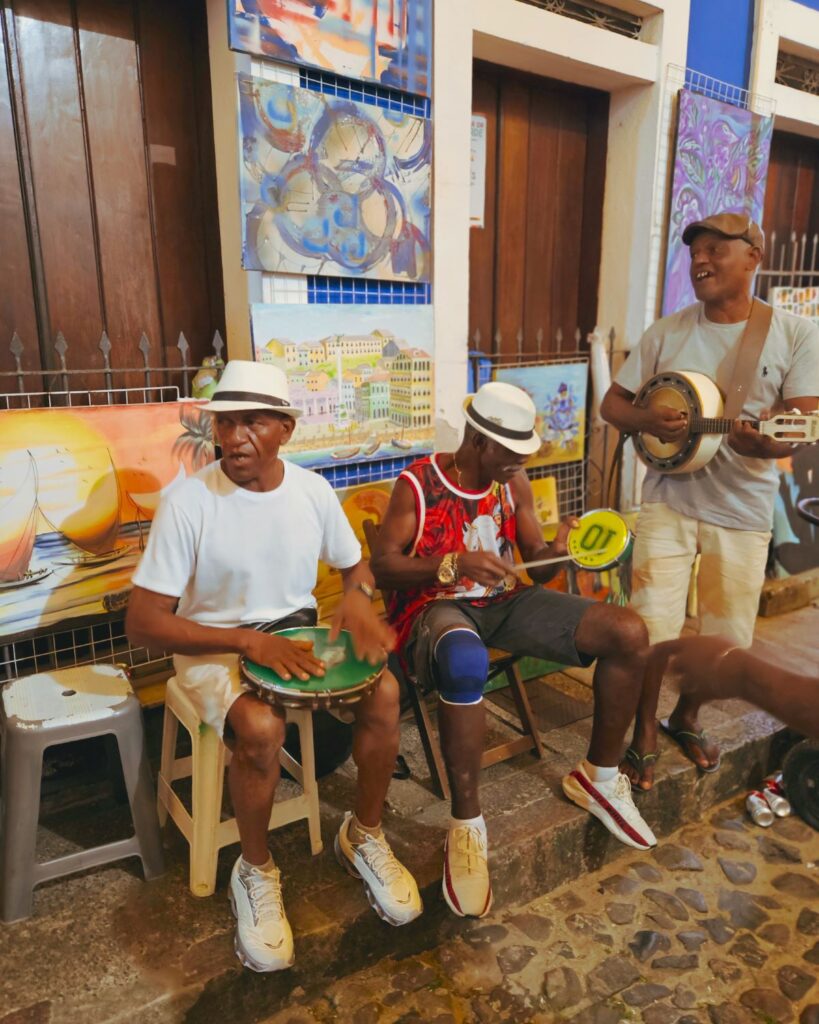
Capoeiristas entertain in the square above the Pelourinho – have a go, take a picture, and buy handmade gifts. It’s a nice area to take a seat, and everyone’s very friendly and open.
In general, the Pelourinho can be visited numerous times and still not get boring. There is always something going on, and the area has a pull.
There are other neighbourhoods a walk away, such as Carmo and San Antonio, that are just as colourful but have modern restaurants and coffee shops.
@queenonajourney Salvador, Bahia is famous for its blocos. Samba-reggae was first played publicly by an Afro Bloco called Ilê Aiyê in the early 70s and then by Olodum and numerous since. Both Olodum and Ile Aiye and all Afro Blocos are known for their protest songs. Afro blocos are neighbourhood based communities that encourage racial awareness, self-esteem, education, and general wellness of the neighbourhood. It’s common to hear drumming in Pelourinho, and my ears would follow the direction it was coming from. Drums are present in every facet of Afro-Brasilian culture.They are used in the religious ceremonies of Candomblé, Samba-Reggae, and during Capoeira. I saw a few blocos while in Salvador and I loved them all. Here’s Swing do Pelo Movimento percussivo Dida – the first Brazilian female afro percussion band (here with an honorary male) 🥁🪘🇧🇷💚✨️ #bloco #blocoafro #salvador #bahia #salvadorbahia #sambareggae #percussion #drums #dida #feminina #movimento #swingdopelo #movimebtopercussivo #music #afrobrazilianculture #afrobrasil #travel #culture #solofemaletravel #travelblog #traveldiary #queenonajourney
♬ original sound – Reyna Jones
Watch the Afro Blocos
Salvador, Bahia is famous for its Afro Blocos.
Samba-reggae was first played publicly by an Afro Bloco called Ilê Aiyê in the early 70s and then by Olodum and numerous since. Both Olodum and Ile Aiye and all Afro Blocos are known for their protest songs.
Afro Blocos are neighbourhood-based communities that encourage racial awareness, self-esteem, education, and general wellness of the neighbourhood.
It’s common to hear drumming in Pelourinho, and my ears would follow the direction it was coming from.
Drums are present in every facet of Afro-Brazilian culture. They are used in the religious ceremonies of Candomblé, Samba-Reggae, and during Capoeira.
I saw a few blocos while in Salvador, and loved them all, but the feminine energy of Dida, Brazil’s first female afro percussion band, stood out as one of my favourites.
Free Walking Tour
A free walking tour is ideal to get your bearings on the Pelourinho area while learning about local history. You can book one through Guru Walk.
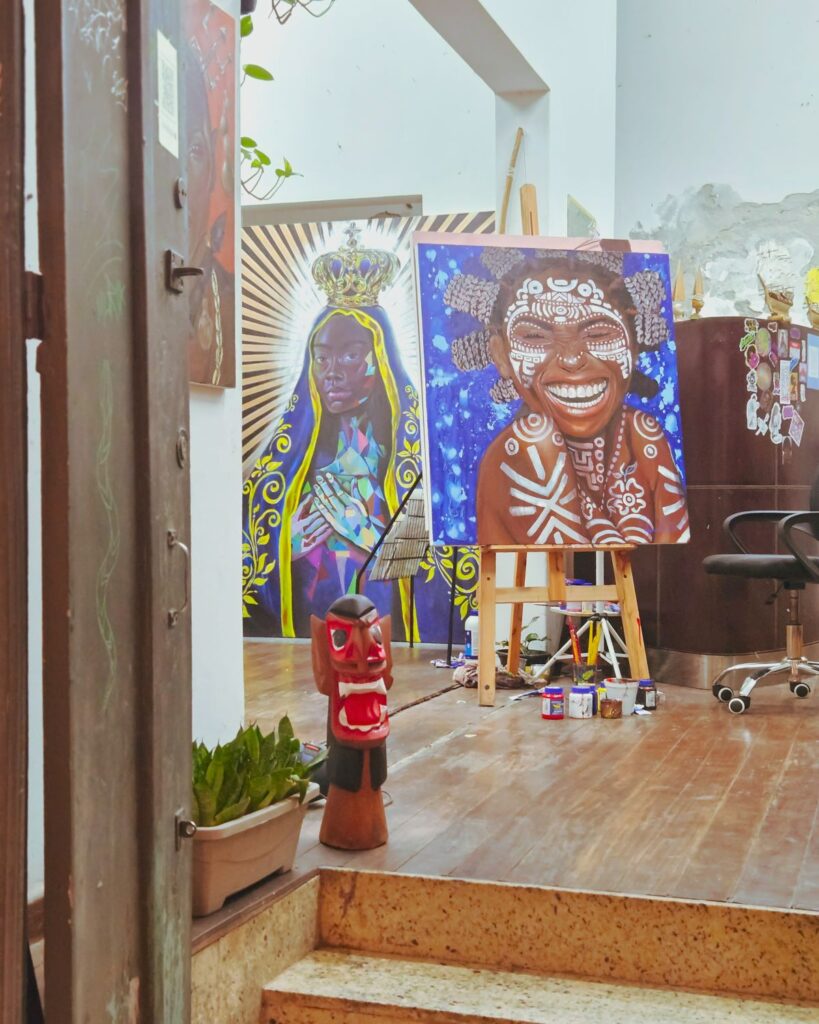
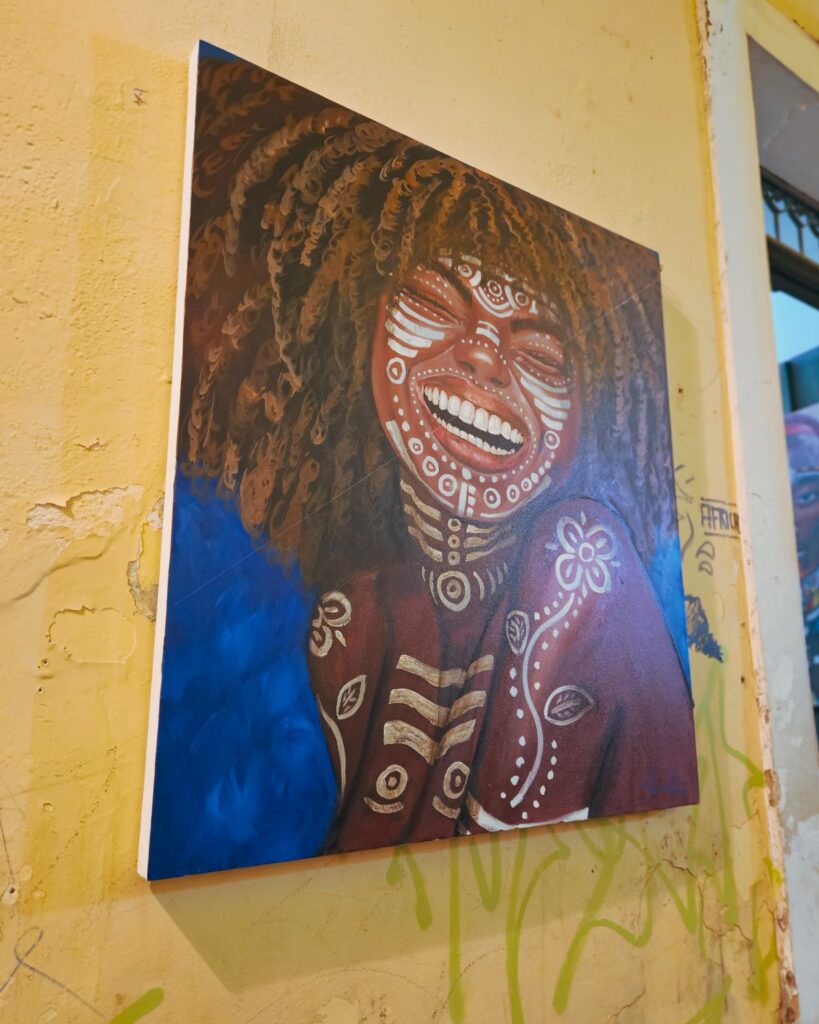
Afro-Brazilian Tour
An Afro-Brazilian heritage tour is a must when visiting Salvador. Tours vary, but it’s a great way to learn and immerse yourself in rich Afro-Brazilian culture.
My tour was through my pousada, but there are also Afro-Brazilian tours available on Get Your Guide.
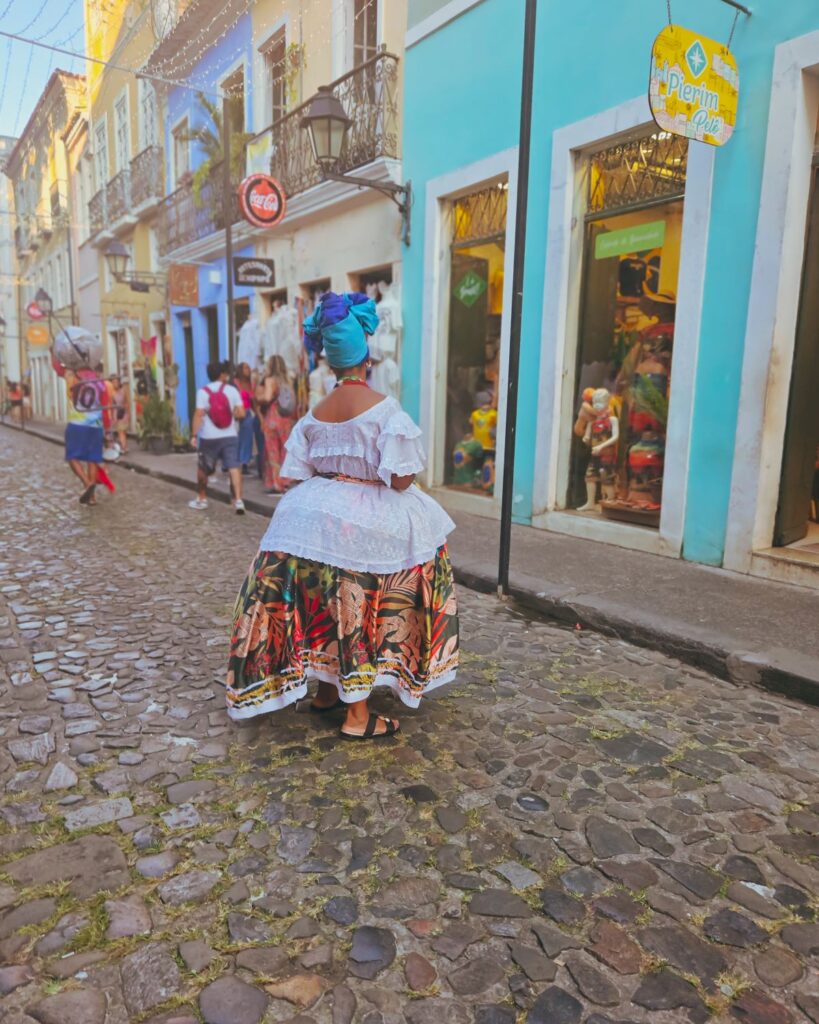
Attend a Candomblé Ceremony
What is Candomblé?
I didn’t know much about Candomblé before my trip to Bahia, but I knew it had some similarities to Santeria, which piqued my interest while visiting Cuba some years ago.
Candomblé arose through the blending of traditional religions brought to Brazil by enslaved Africans and the Roman Catholicism of the Portuguese colonists to hide the fact that they were practising African spirituality.
Practising anything African was illegal at the time, so they pretended they were worshipping Catholic saints as a cover, this allowed Candomblé to thrive, but has primarily survived orally, passing down through generations.
Because enslaved Africans from different tribes were thrown together, this resulted in several different candomblé traditions, but in short:
- Practitioners of Candomblé believe in one God (Oludumaré) who is served by lesser deities (called Orixás or Voduns).
- Every person has their own Orixás, which represents the forces of nature and is believed to be a guiding presence in people’s lives.
- Music and dance are important parts of Candomblé ceremonies.
Candomblé means “house of dance with drums” or “dance with drums”, and often, when wandering the Pelourinho or other parts of Salvador, you’ll hear the drumming of a type of samba-reggae for which Bahia is known.
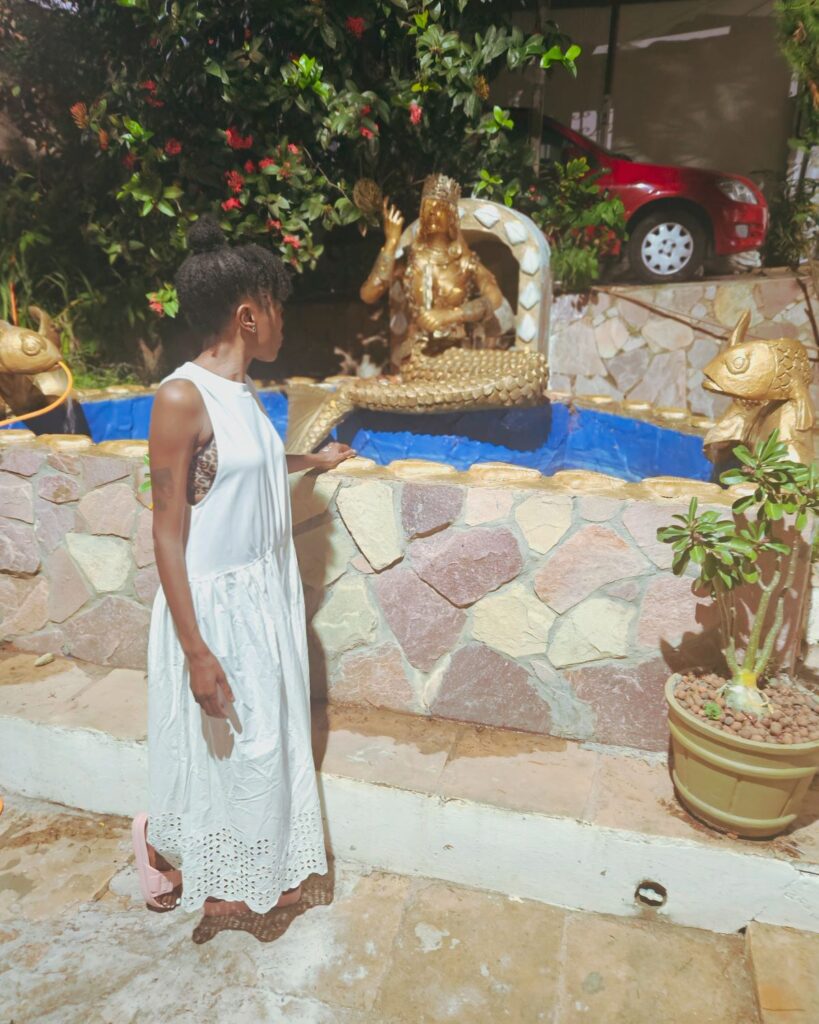
The Ceremony
Through my pousada, I had the opportunity to attend a Candomblé ceremony in the community of Liberdade, Curuzu. Curuzu is a neighbourhood with one of the highest populations of Afro-Brazilian residents in Brazil.
Candomblé ceremonies take place on sacred ground, in temples called terreiros, and there are many dotted throughout Salvador. This particular one was the first temple to be protected by a city hall.
Ceremonies vary and are themed accordingly; the house is decorated with the colour of the honorary Orixá, and the favourite dish often made with (dendé) palm oil is usually served.
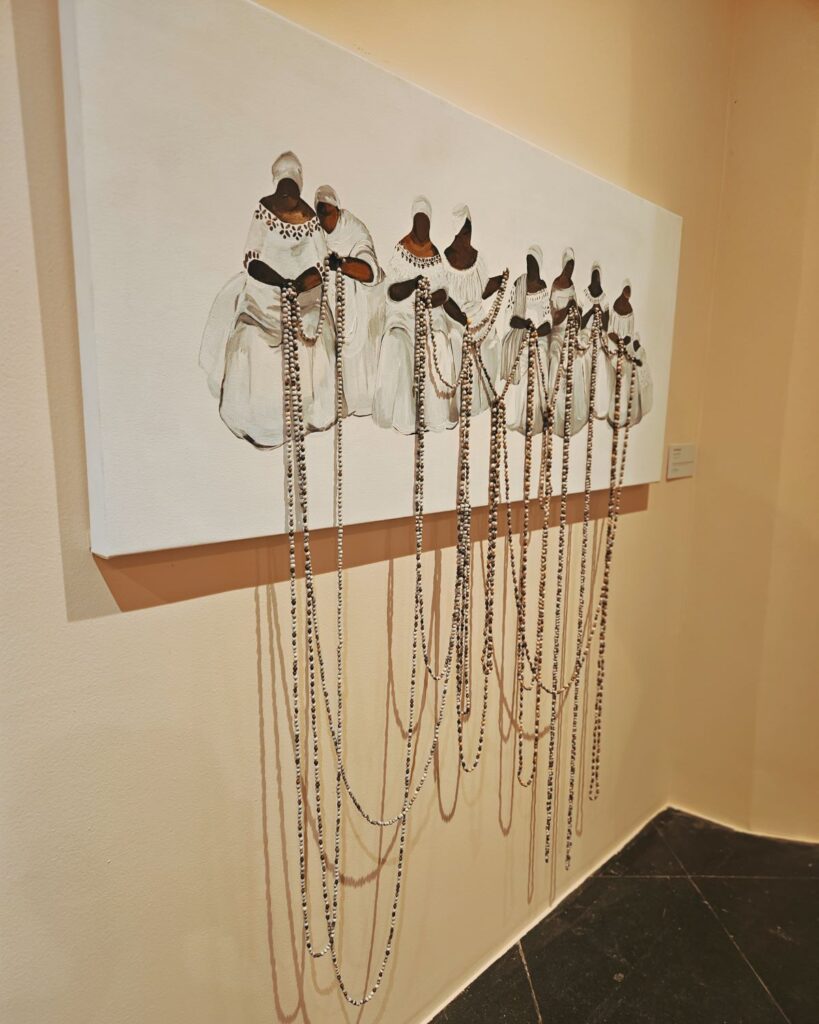
During the ceremony, participants danced in a circle to enable them to embody the energy of their Orixá during a long ceremony of drumming. It should be noted that it is from Candomblé rituals that the variety of sambas that exist in Brazil have their roots.
I had read before attending that at its height, the worshipper’s Orixá temporarily possesses the dancer’s body, and they enter a trance-like state. From that description, you would expect something extreme, but it’s not. It was an energetic and animated ceremony of dancing for some participants, while others suddenly became still as if in a trance and exhibited facial twitches. After some time, participants would be comforted, covered with a shawl and silently led from the room while others continued to dance.
Candomblé has allowed oppressed and marginalized communities in Brazil to maintain ties to their African traditions. While Candomblé has been acknowledged as an official religion and its practice is legal in Brazil, there are still a lot of prejudices surrounding it, and it is often misconstrued. Because of this, no photos or filming is allowed at ceremonies. Should you attend a ceremony, you must wear white or light clothing.

Jogo de Buzios
The “Jogo de Buzios” is one of the traditional forms of divination and is an important aspect of Candomblé worship. It is a way to enter into dialogue with the forces of the Orixás and the ancestral forces and to receive information and orientation on personal questions.
The cowry shells are interpreted in the pattern in which they fall. Divination with cowrie shells is one of the oldest spiritual practices in the world. I did this as part of the Afro-Brazilian tour.
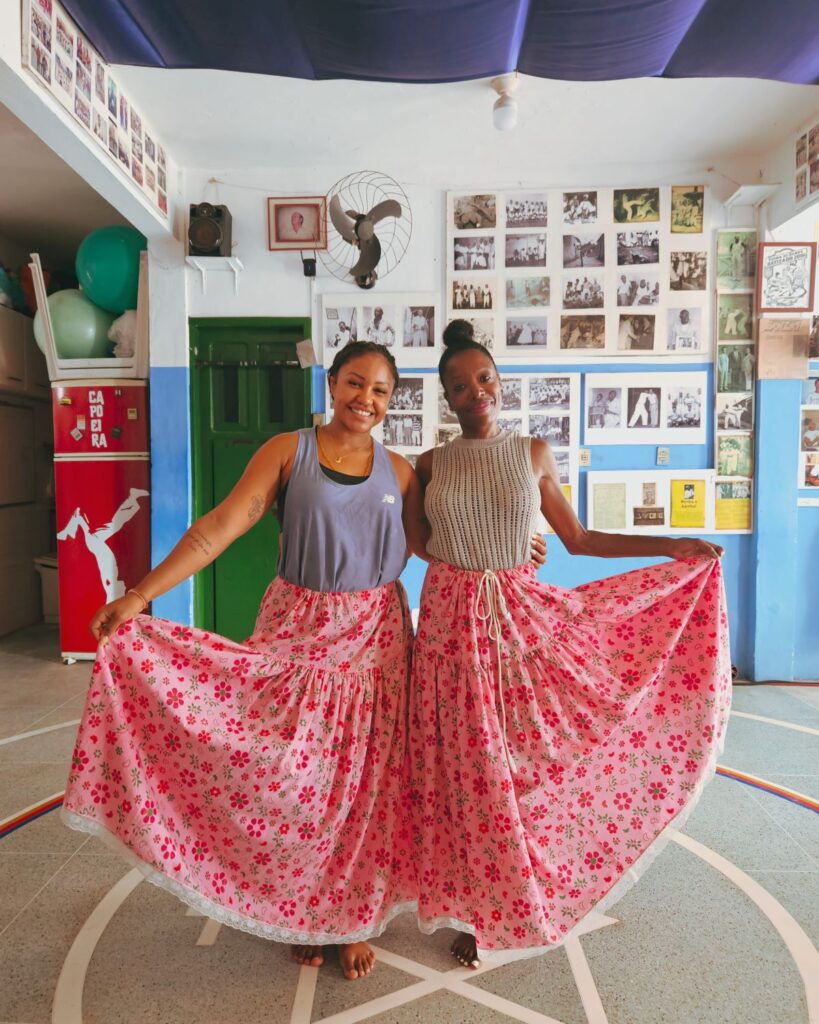
Do a Samba de Roda Class
Samba de roda is a traditional Afro-Brazilian dance from Bahia which involves music, dance and poetry. It was originally only performed by women who would wear a heavy and fluffy skirt of five or six layers for the dance. The same outfit is worn for Candomblé and Samba de Roda and is performed using the same percussion instruments as used during the religious ceremony.
Historically, after the ceremonies of Candomblé, the ladies would come to Samba de Roda to clap and answer the songs. When the men were tired of doing capoeira, the ladies would come to cheer them up and raise their energy and vibes by doing samba de roda. At this time, only women would dance samba de roda, and only men would do capoeira.
I had an informative and fun class with Yasmin at Associacao de Capoeira Mestra Bimba. I can’t recommend her highly enough. A beautiful spirit. Book here.
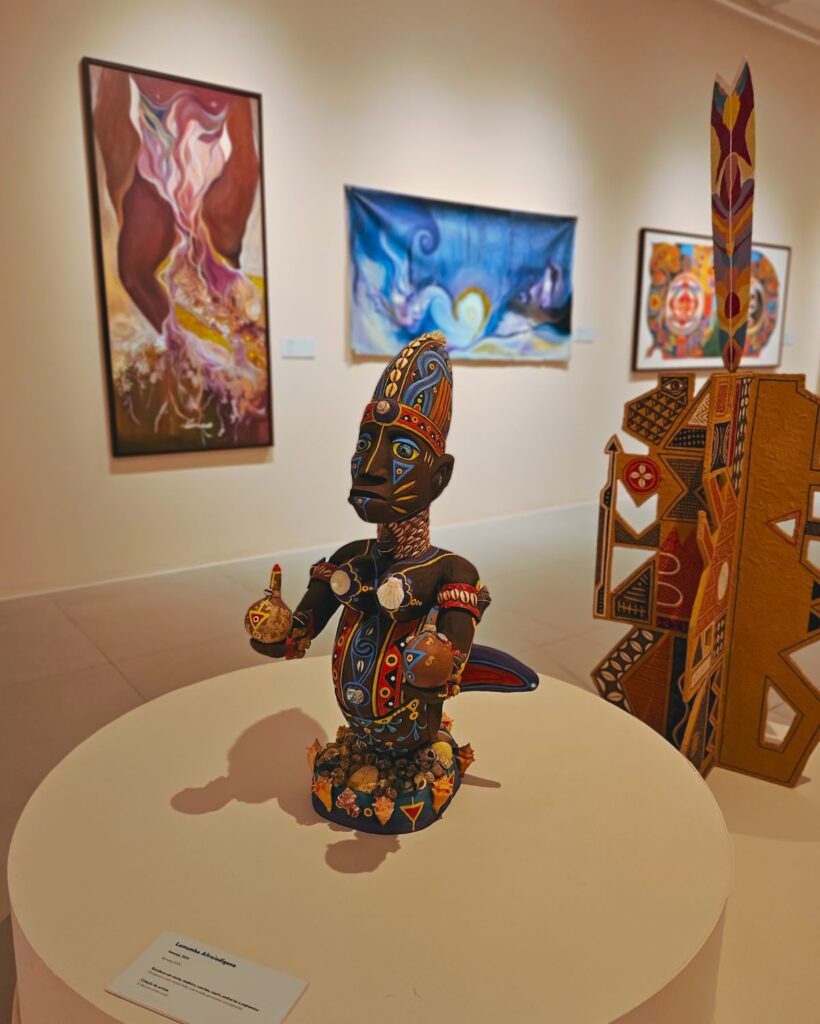
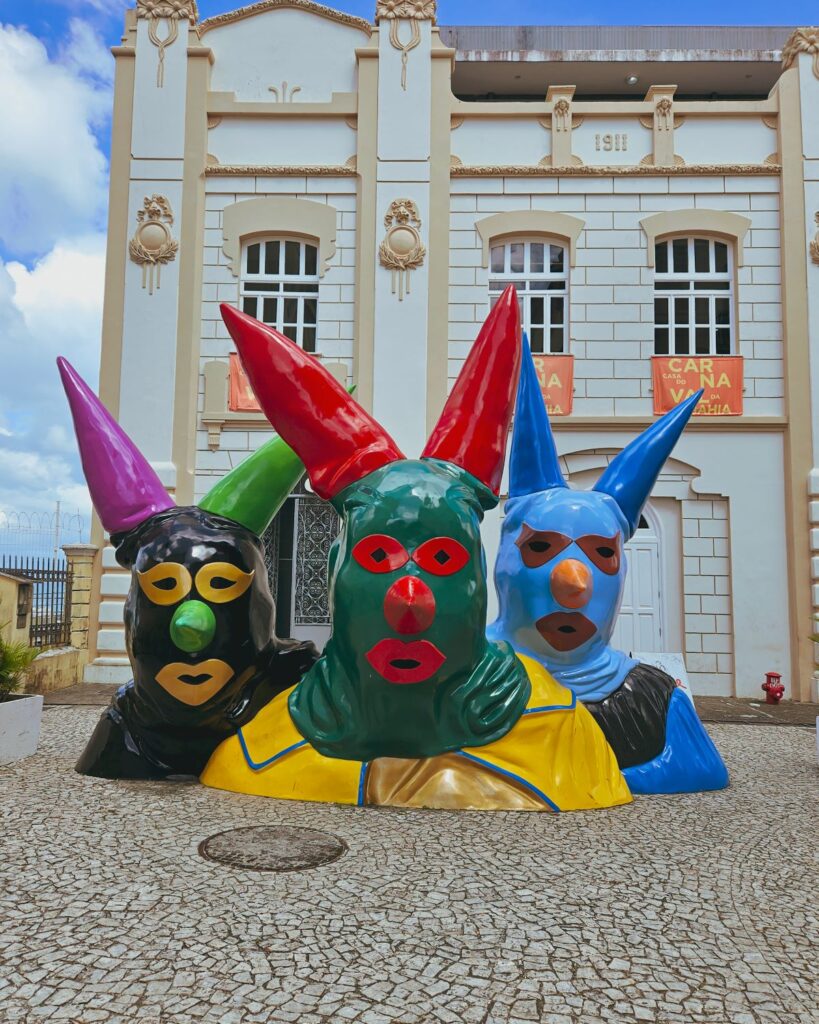
Visit the Museums
Salvador has no shortage of museums. Here’s a few
Casa de Benin – An Afro-Brazilian artistic and cultural collection composed of about 200 pieces from the Gulf of Benin – Free
Jorge Amado House – Jorge Amado is one of the most acclaimed Brazilian authors. His books reflect the culture of his home state of Bahia and its people. It also has a great view of Pelourinho from upstairs. – free.
Museu Nacional da Cultura Afro-Brasileira (MUNCAB) – Afro-Brazilian history, a collection of displays and art – entry R$20.
Museu Afro-Brasileiro – displays costumes of the Orixás of Candomblé – entry R$20.
Museum of Gastronomy – showcasing the preservation and celebration of the flavours and traditions of Bahian cuisine – free.
Casa do Carnaval – The Casa do Carnaval da Bahia museum provides an interactive and playful narrative of the world’s largest street carnival, the Carnival of Salvador. There is also a nice restaurant on the roof terrace. Though Rio’s may be more popular worldwide, it’s Salvador, Bahia that holds the country’s biggest carnival – entry R$20.
Most of the exhibits at the museums are in Portuguese.
All of the above is in the upper city. As stated above, you can take the Elevador Lacerda or other older, less popular elevators to transport you between the two divisions of Salvador.
The Mercado Modelo and the port, from where you will take the ferry should you visit any of the islands, are in the lower city.
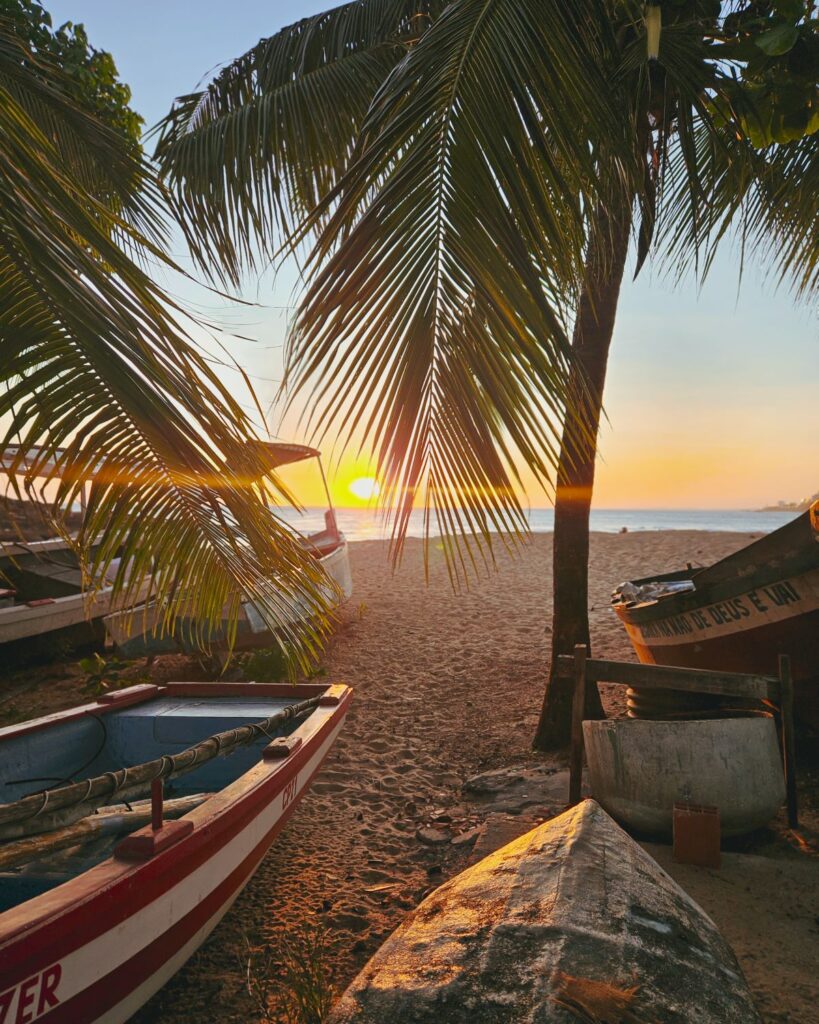
Other neighbourhoods to visit
Barra
Barra is a lively neighbourhood with beaches, street food, bars, a waterfront walk, and a popular sunset enjoyed from South America’s oldest lighthouse, Farol da Barra.
Barra is a popular neighbourhood for tourists, but I recommended visiting Praia do Porto da Barra for a local beach vibe. Beach chairs and umbrellas are available to rent. Though you can pay at the end, set the price before to avoid any confusion. There are plenty of vendors selling food and drinks on the beach. Visit on a Sunday and get a real feel for local life.
Rio Vermelho
Known as the bohemian area, Rio Vermelho has a reputation for being best enjoyed at night. It has a lot of music venues, shopping centres, trendy bars and a diverse culinary scene. It also has a lovely sunset with fewer people than Barra. Check out @soshape_ for nightlife in Rio Vermelho.
Barra is popular for fishing, and the most celebrated orixa in this coastal city is Yemanjá, queen of the salty waters, celebrated here each year in a festival on 2 February.
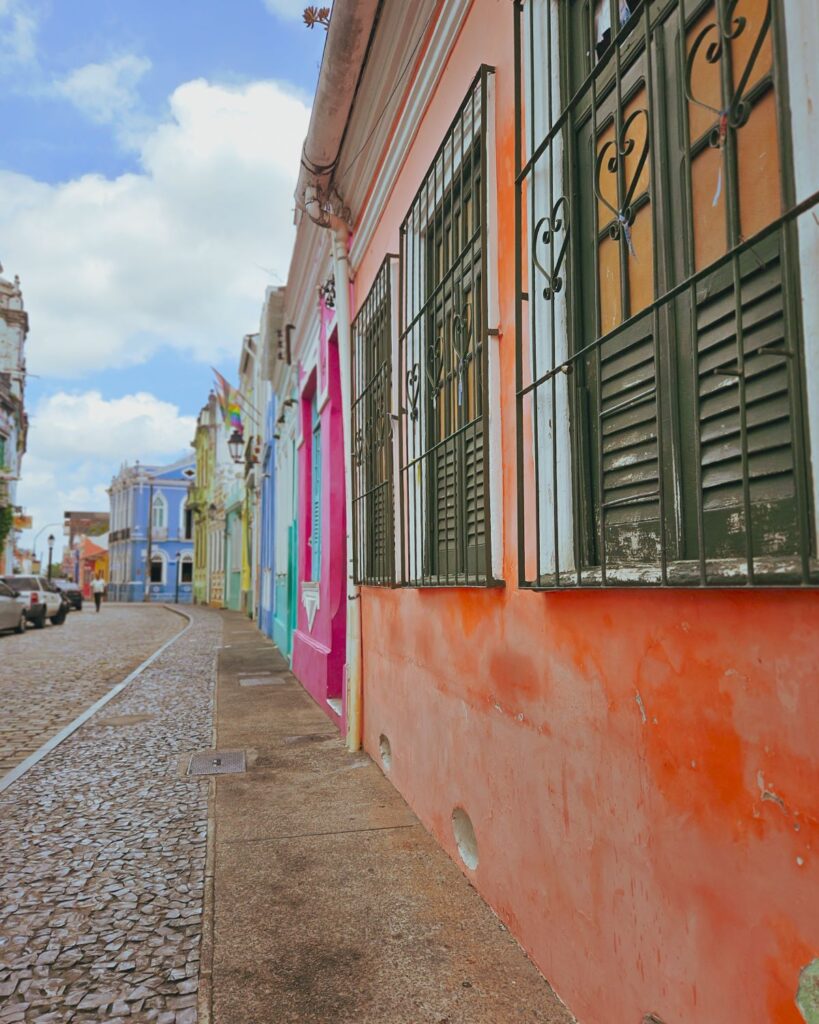
Where to stay
That depends on how you plan to spend most of your time. The Pelourinho is where the culture is, and I was based a couple of minutes’ walk away at Pousada de Mangueira. Although not immediately in the Pelourinho, I was still close enough to hear the drumming.
This pousada comes highly recommended. It’s an excellent location, reasonably priced, the staff are lovely, extremely helpful, and the breakfast delicious. Claudio gave excellent recommendations, and it is through him I got to do so much. It is through him I did the Afro-Brazilian tour and attended the Candomblé ceremony.
If you want beach and culture, maybe split your time between Barra and the Pelourhino.
It’s a different energy in Barra. It has charm and is a must-visit for the beach, sunset, bars and a lovely walk along the waterfront. However, the Pelourinho, though also fairly touristy, has heart, soul and a story to tell. It’s colourful, authentic and raw.
Other points of interest
Church of Bomfim
The Church of Bonfim is a popular landmark an Uber ride away from the Pelourinho. Outside the church are coloured ribbons tied to the railings, and here and all over Salvador, people sell or give multicoloured remembrance ribbons with ‘Lembrança do Senhor do Bonfim da Bahia’ written on them.
A wearer must have the ribbon tied around their wrist and knotted three times by someone else while they make a wish – when the ribbon falls off, the wish will come true. The church combines elements of both Catholicism and Candomblé and each colour of the ribbon represents an Orixá.
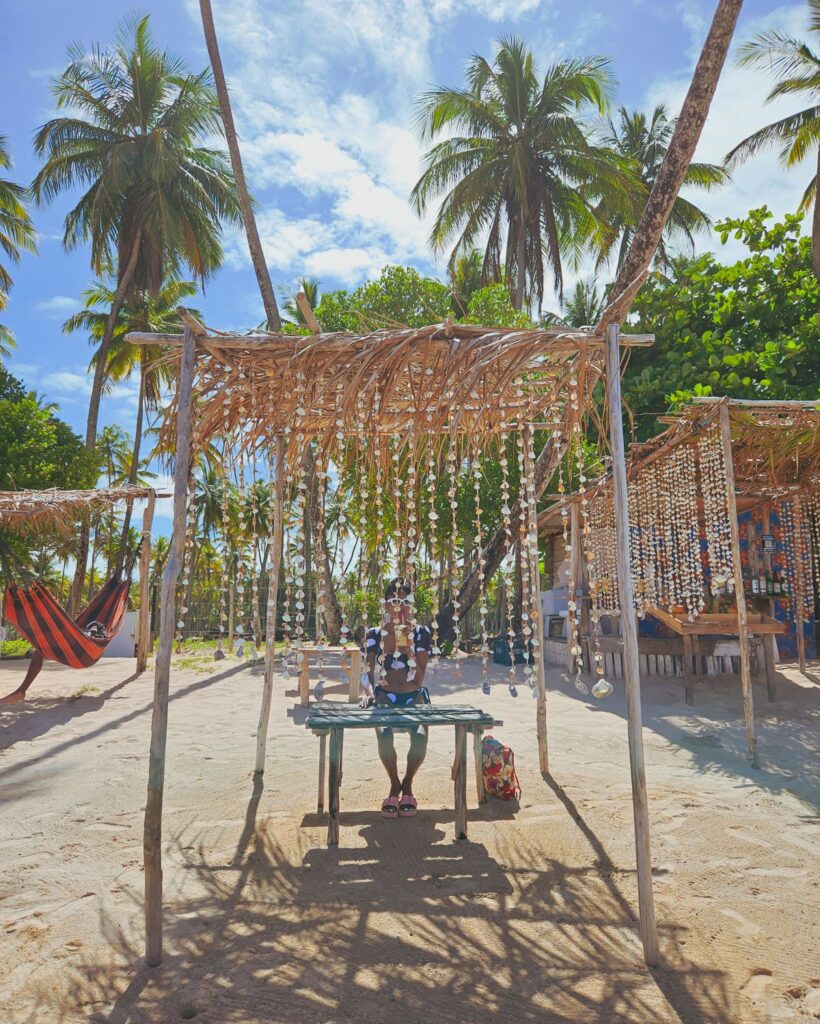

Visit one of the Islands of Bahia
The Tinharé Archipelago is a group of islands in the city of Cairu, based on the South Coast of Bahia, many of which are ecological sanctuaries and home to some of the country’s best beaches. It is formed by 26 islands, the most popular being Morro do São Paulo and the quieter ones Garapuá and Boipeba.
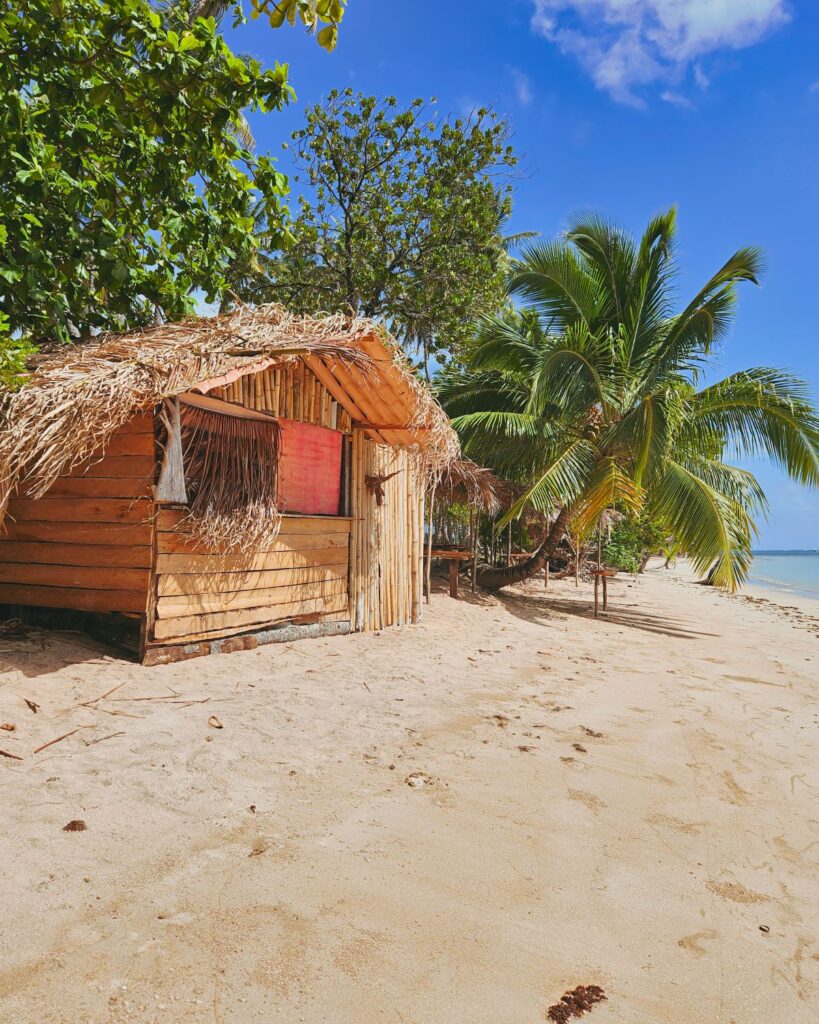
Boipeba (Paraiso)
Everyone I spoke to in Salvador described Boipeba as “paradise!”.
Boipeba is a natural beauty with no cars, resorts, banks, and no tourists in masses. In fact, most tourists I met in Bopieba were Brazilian and visiting from São Paulo or Rio.
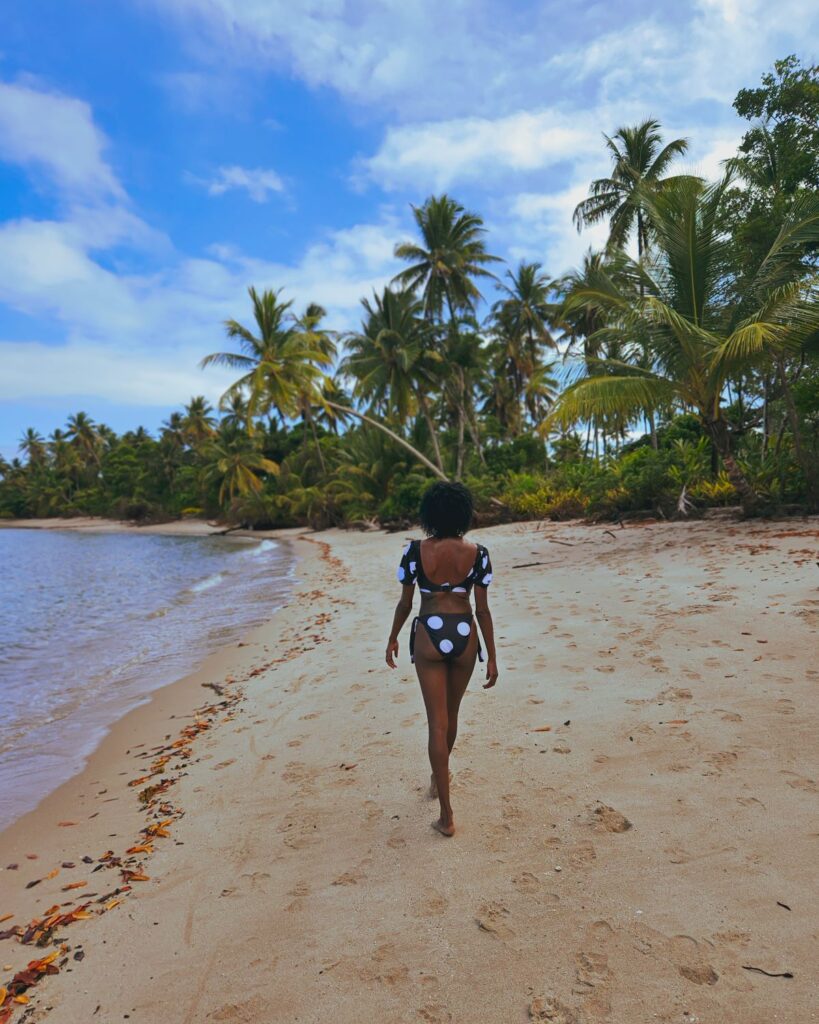
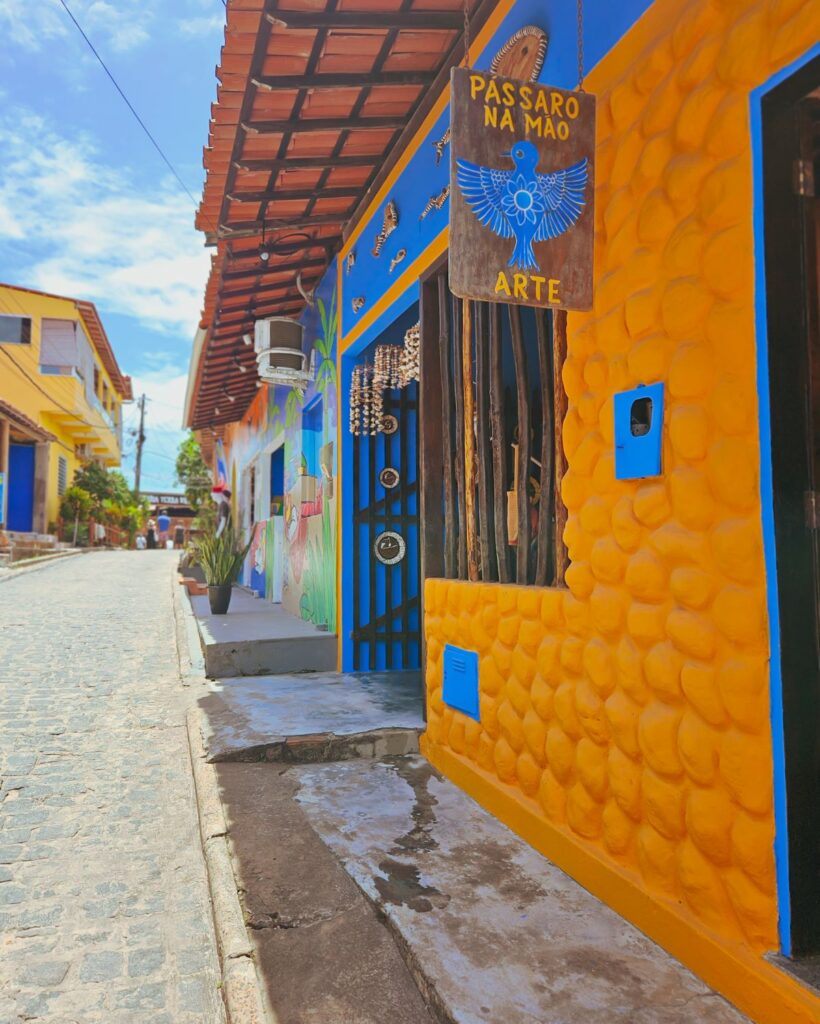
Boipeba remains largely unspoiled due to difficult access, and its tranquil settings will make you question life. It’s rustic, authentic, reasonably priced, and the beach restaurants serve delicious food. Try lobster on Tassimirim Beach at Gledes Restaurant.
The island’s only public transportation is by boat or quad service to take you to your destination riding the sandy dunes. Make sure you have enough money, as no banks mean no ATMs. Credit cards are accepted, but you will incur a fee.
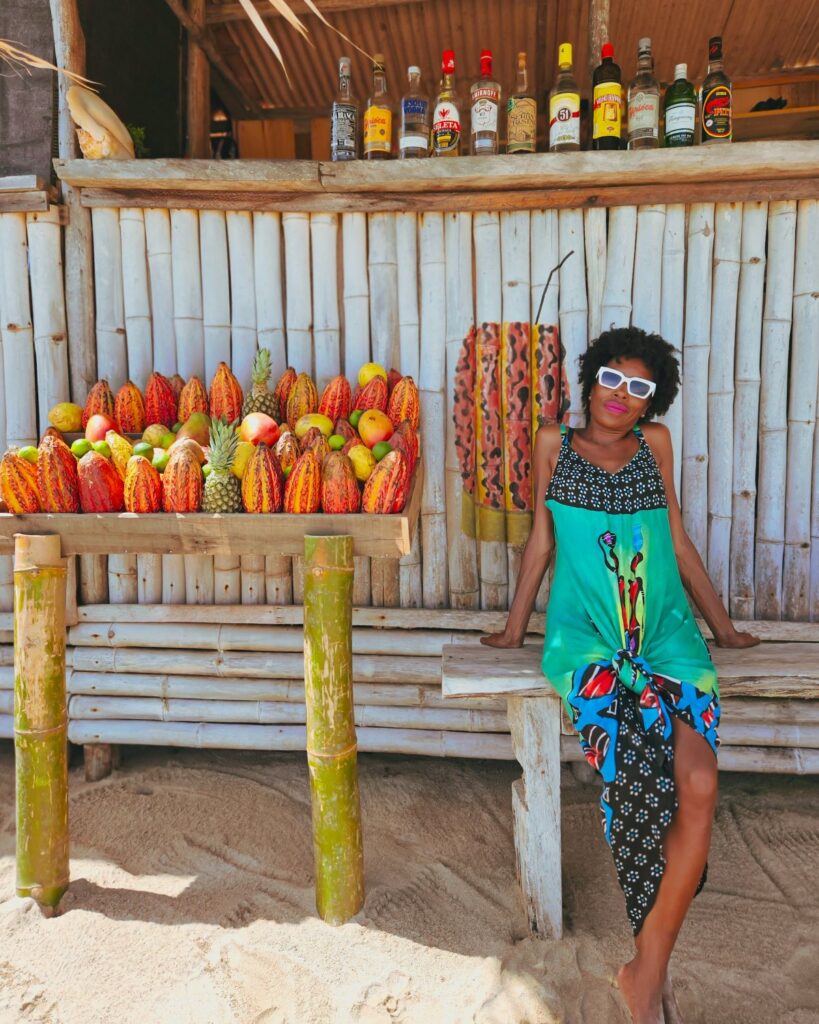
Boipeba is still part of Bahia, but it’s a schlep to get to. However, I managed to arrange a transfer through Island Tour Agency, which cost R$330 one way. I was picked up from my pousada, got a ferry, then a minibus, then a car, then a speedboat. It took about six hours, but trust me, you’ll forget the journey once you get there.
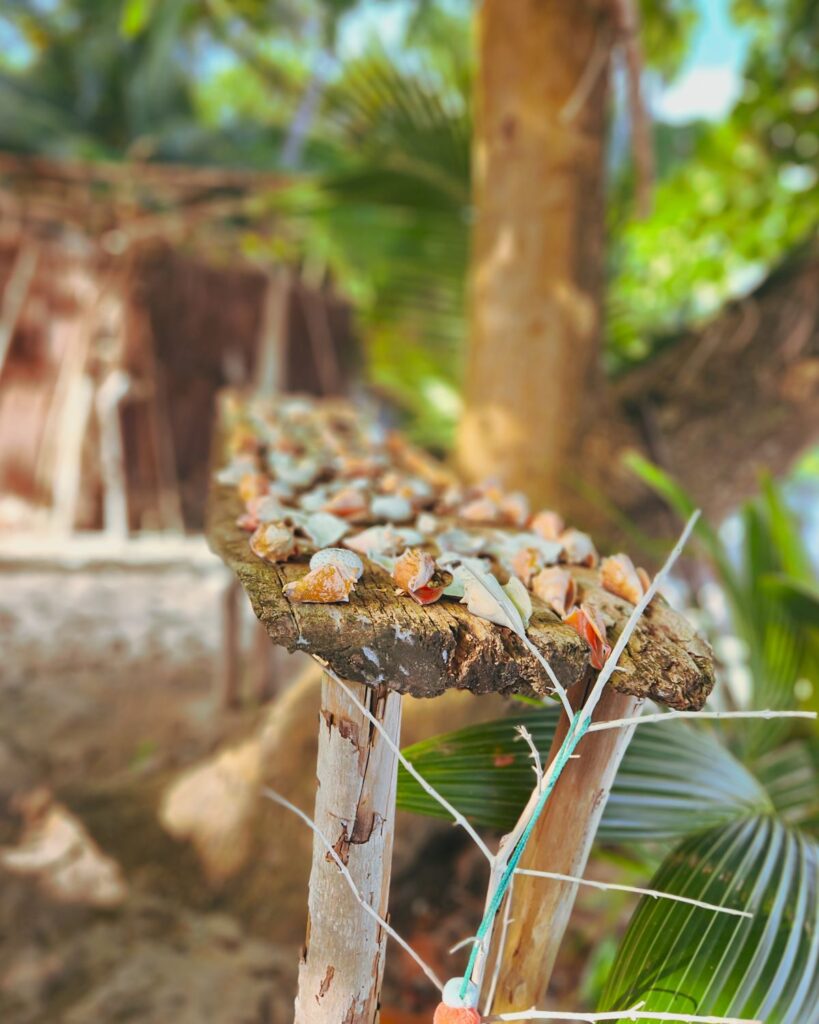
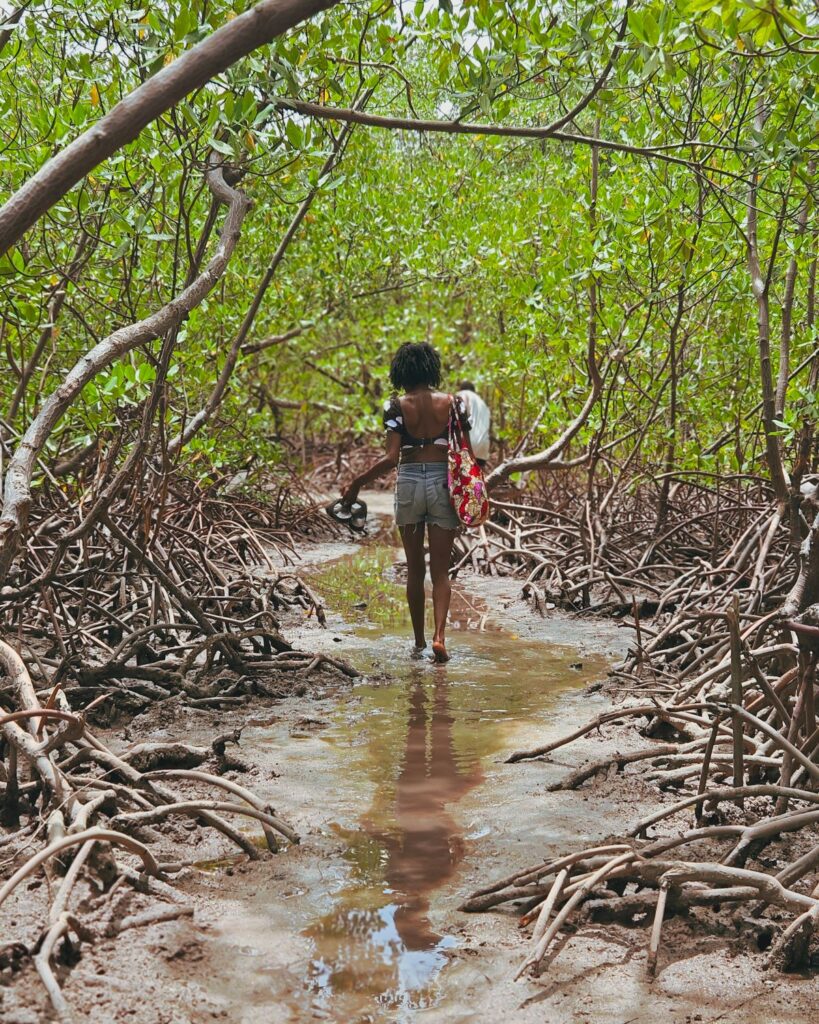
There’s not a great deal to do in Boipeba except bask in it’s beauty – beaches, tranquillity and nature.
I stayed at Pousada Moreré, and again, I highly recommend this pousada. The breakfast is delicious, and the location is superb. Moreré is a more remote part of the island and consistently ranked in the top 10 beaches in Brazil.
Velha Boipeba is the main entry point onto the island and where you’ll find the majority of the hotels, pousadas, restaurants and shopping.
As soon as I arrived in Boipeba, I wanted to cancel Morro de São Paulo, its more popular neighbouring island, which was due to be my next stop.
Things to do in Boipeba
Walk barefoot through the mangroves.
Visit Praia de Castelhanos and drink caipirinhas out of cocoa at Barraca and da Nega.
Take a speedboat and visit the natural pools of the island.
Basically just live in Paradise! I want to pack a rucksack and move there.
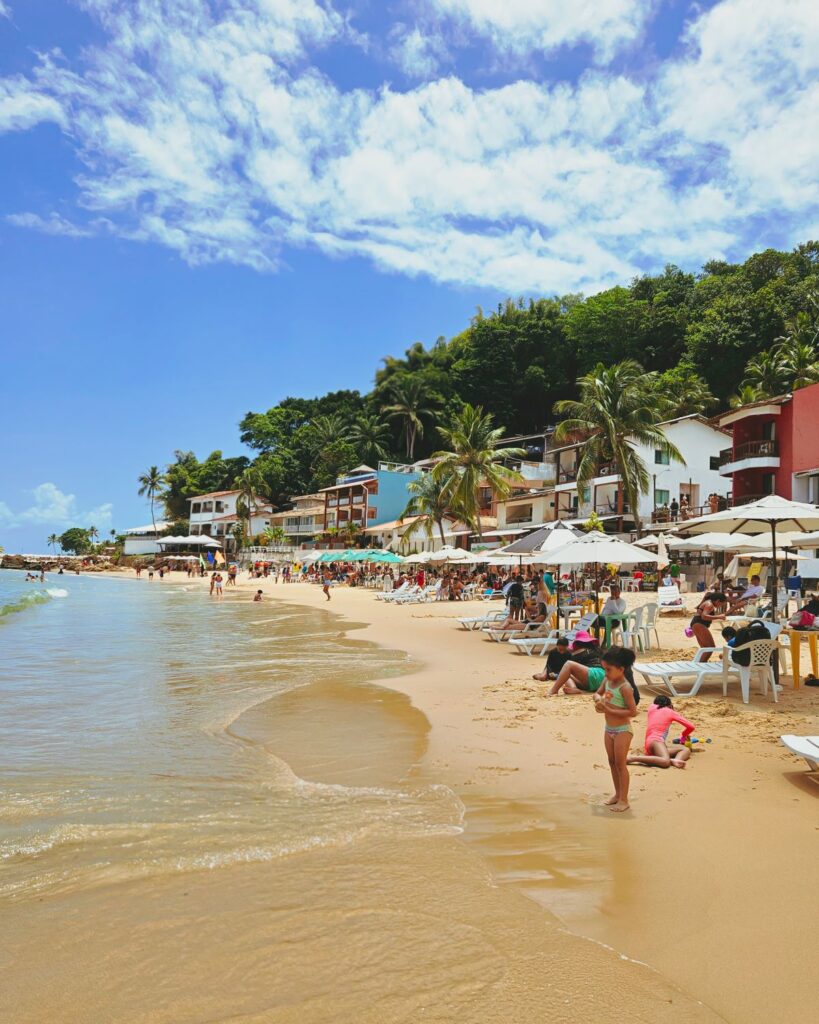
Morro de São Paulo
Morro de São Paulo is the neighbouring island to Boipeba and is known as the party island. It’s far busier than Boipeba, as it’s easier to get to and therefore popular for day trips.
Again, the island is small, and no cars are permitted. Goods, including your luggage, are moved almost exclusively by wheelbarrow through the narrow main street. Most shops, restaurants, and pousadas are also off this main street.
If you’re looking for nightlife, more activities as well as beautiful beaches, then Morro de Sao Paulo is for you. The island has five beaches, with the quieter ones being fourth and fifth.
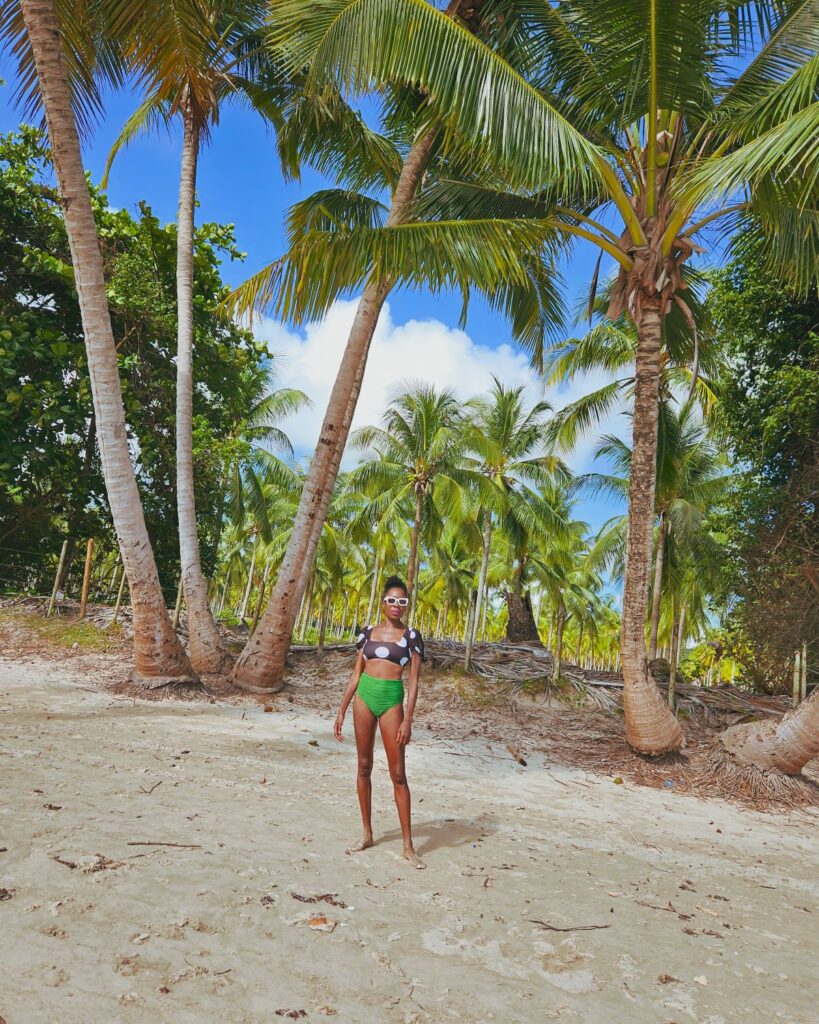
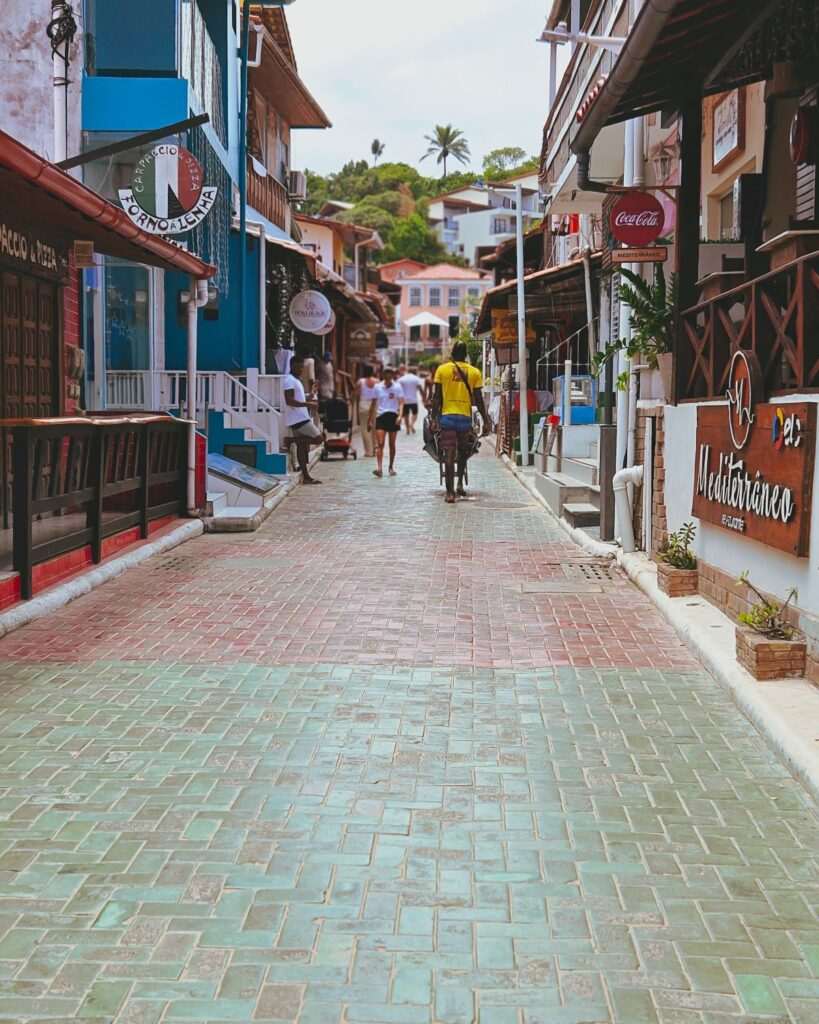
I only stayed one night in Morro de São Paulo as I was having difficulty getting a transfer from Boipeba to Salvador on Sunday. Transfers are more frequent from Morro.
The island is more built up and much more touristy than Boipeba. The first British accent I heard during my trip to Bahia was in Morro while I was having my worst meal of the trip. That said, it’s a beautiful island, and I probably would have loved it here had I visited it prior to visiting Boipeba.
If you take a speedboat from Boipeba to Morro, there’s an excellent oyster stop on the way.
I took a transfer from Morro de Sao Paulo to Salvador with Cassi Turismo for R$150, which took approximately four hours. Alternatively, you could take a catamaran, which takes half the time, that’s if your stomach can handle it.
Chapada Diamanteni
For trekkers, another natural beauty of Bahia is Chapada Diamanteni National Park and nearby Lençóis. Chapada Diamanteni was formerly the world’s largest diamond mining area and has numerous stunning waterfalls, natural pools, and breathtaking viewpoints.
Foods to note
The south coast of Bahia is the land of palm oil known as the Dendê coast. The Dendê coast is also the country’s producer of cocoa. Therefore, some popular foods in the north specifically are:
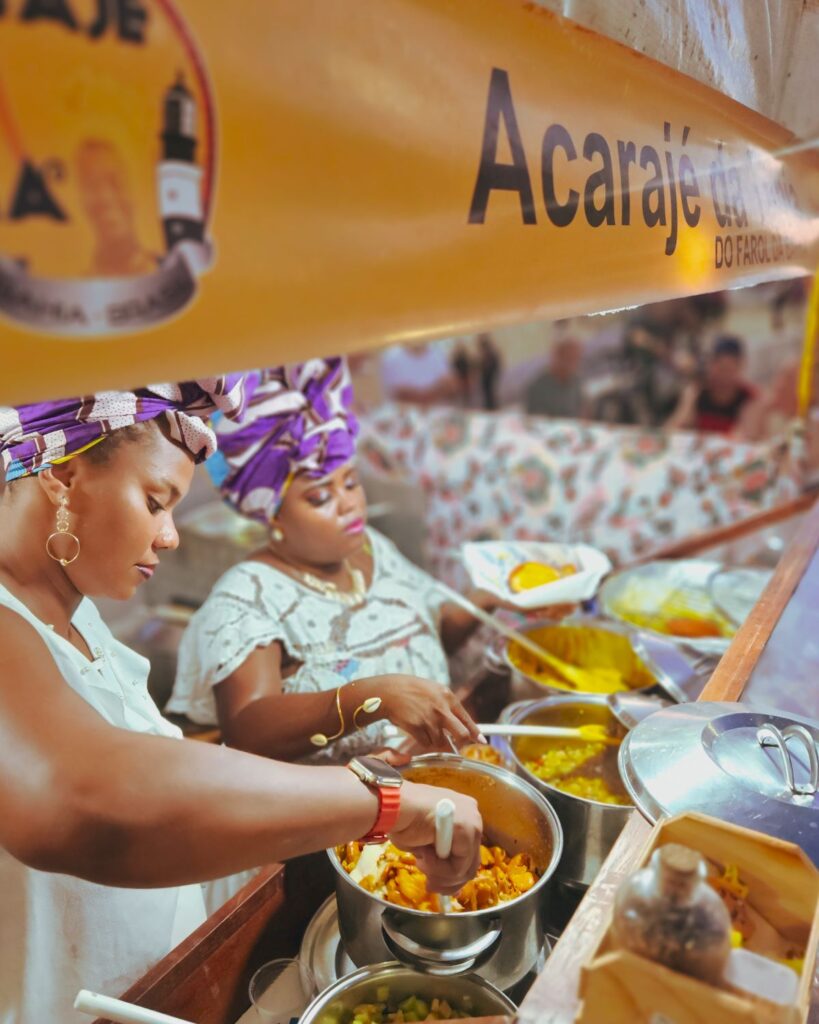
Acarajé
Acarajé is a hugely popular street food traditionally found in Bahia, particularly in Salvador and sold by Baianas.
It’s a black-eyed bean fritter, which originated in West Africa (where it’s known as Akara) and carried by enslaved Africans to Brazil.
Acarajé also serves as a religious offering in Candomblé.
Black-eyed peas or cowpeas are made into a batter, formed into a ball, deep-fried in Dendê palm oil, split in half, then stuffed with flavourful pastes made from numerous ingredients such as okra, cashews, palm oil, and topped with green tomatoes and shrimp.
You won’t miss the numerous Baianas selling Acarajé, and I ate loads during my trip. They’re delicious.
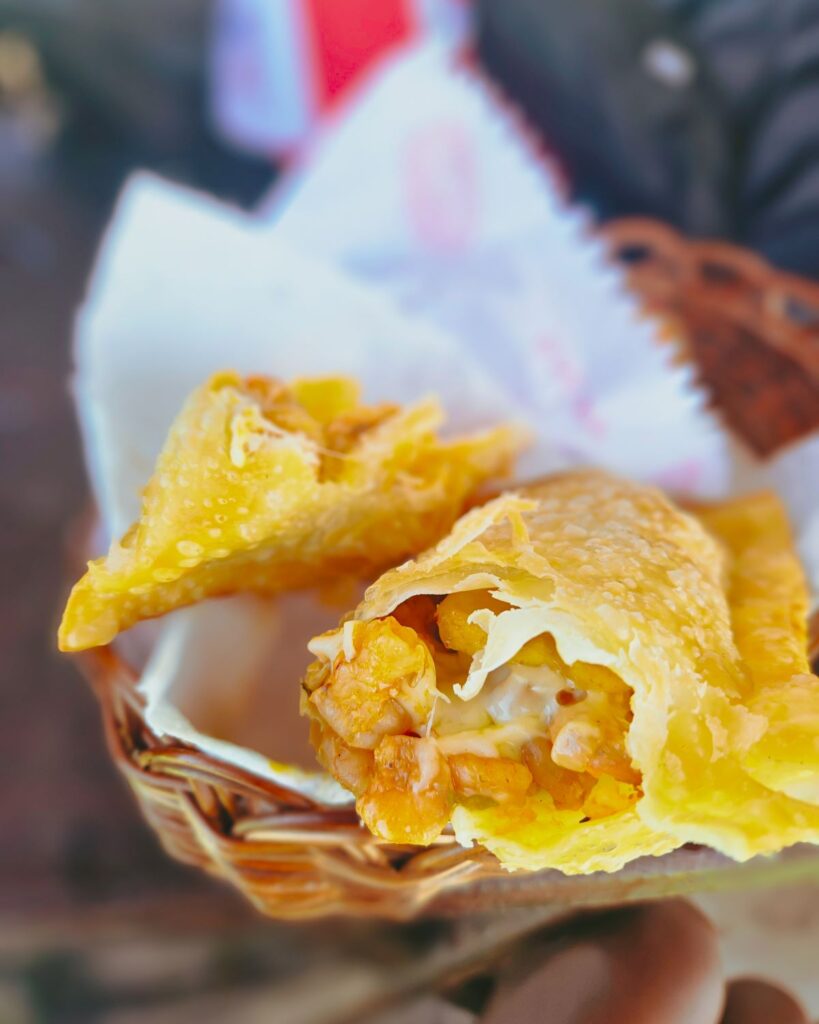
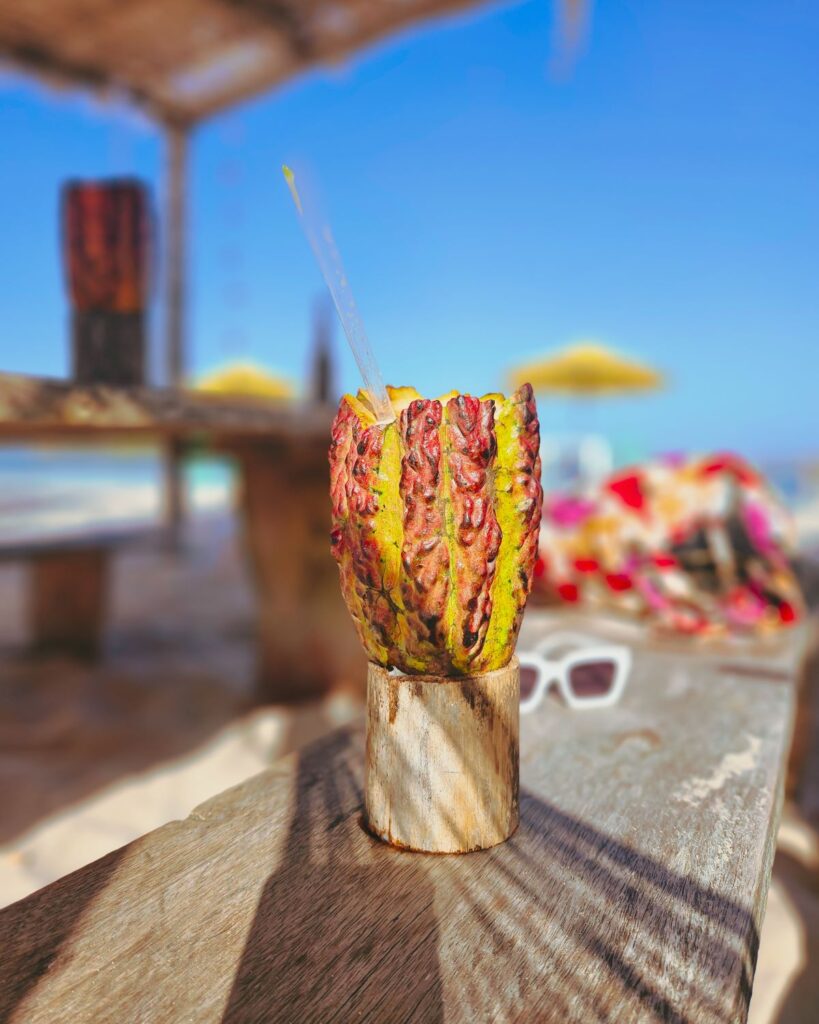
Pastel
Try the huge deep-fried pastries that come with various fillings. When on the Dendê coast on islands such as Boipeba, fillings often include palmita (palm hearts) and also shrimp and cheese. Palmita is a white vegetable that comes from the core of certain kinds of palm trees. They taste even better with a Caipirinha out of cocoa on the beach.
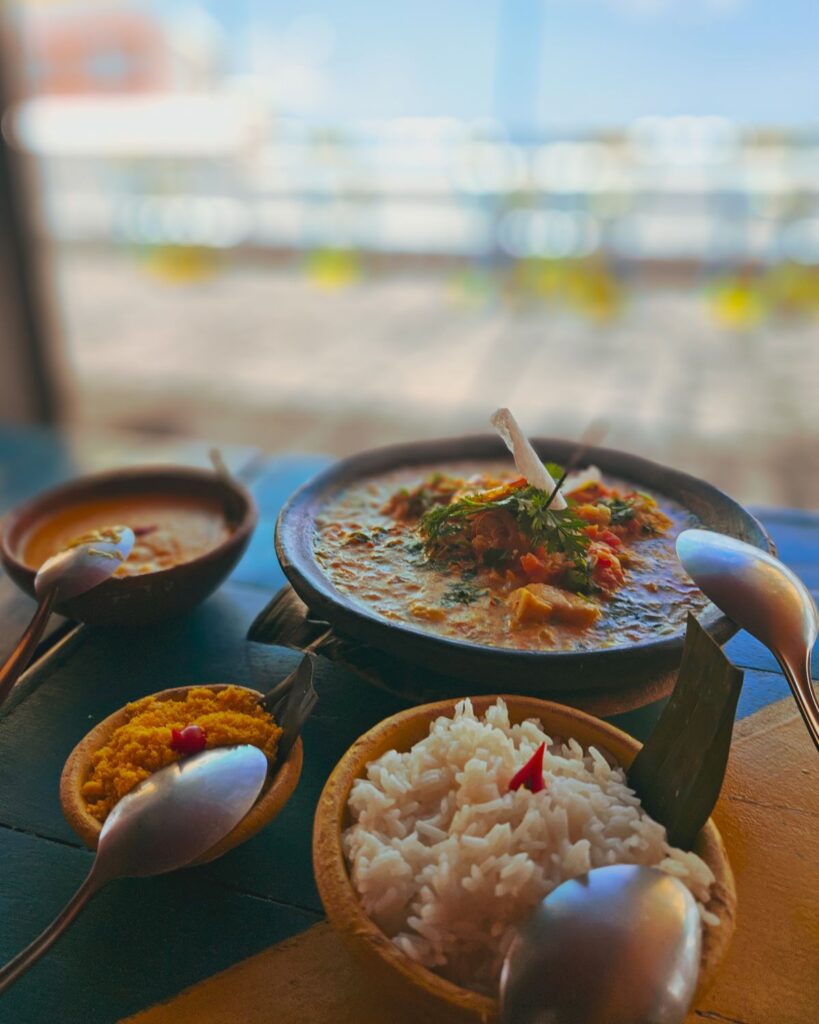
Moqueca
A Brazilian seafood stew typically made with shrimp or fish and palm oil. The dish has been passed down through generations, and each region of Brazil has its own variation of moqueca, showcasing the diversity of the country’s culinary heritage.
@queenonajourney Bahia is where Brasil started yet is often overlooked on the tourist itinerary, or Salvador visited for a few days. Salvador, Bahia, is Brasil’s first capital and the heart of the country’s Afro-Brasilian community. It’s the most African city outside of Africa, and somewhere I’ve wanted to visit for a long time. I spent my whole trip in Bahia, and I wish I could have stayed longer. Part of my stay was based in Salvador, just outside the historic centre – Pelourinho. Other neighbourhoods visited: Barra Rio Vermelho Liberdade I did an Afro-Brasilian heritage tour, a Samba de Roda class, and attended a Candomblé ceremony. Islands visited Boipeba 💚🌴🌞🇧🇷✨️ Morro de São Paulo The drums pulsating through the cobbles of Pelourinho in Salvador will forever be etched in my memory and heart, and the laidback Bahian living in Boipeba – paradise. I didn’t want to leave! The energy of Pelourinho has been transformed since the days of its grim past and the spirit of our ancestors live on through the beat of the drum in the many afro blocos, capoeira, Candomblé and samba that against the odds have become cultural staples of Brasil. It was hard work at times with my limited Portuguese, but I got by and at other times just hoped I was going in the right direction 😆 The only thing I wish I did different is book a flexible flight and extend my stay. 💚🇧🇷✨️ #bahia #salvador #afrobrasil #africanculture #afrobrazilianculture #barra #riovermelho #boipeba #paradise #beaches #morrodesaopaulo #solofemaletravel #wanderlust #Brasil #brazil #travelblog #queenonajourney
♬ Olodum – CDM Music
Is Bahia worth visiting?
The drums pulsating through the cobbles of the Pelourinho in Salvador will forever be etched in my memory and heart and the laidback, Bahian living in Boipeba was paradise. I didn’t want to leave!
The energy of Pelourinho has been transformed since the days of its grim past and the spirit of our ancestors lives on through the beat of the drum in the many afro blocos, capoeira, Candomblé and samba that, against the odds, have become cultural staples of Brazil.
At times, it was hard work with my limited Portuguese, but I got by and at other times, I just hoped I was going in the right direction. Bahia is different to Sao Paulo or Rio in that fewer people speak English, so basic Portuguese will get you far, especially if you plan to visit remote islands such as Boipeba.
Is Bahia worth visiting? The only thing I wish I had done differently was book a flexible flight and extend my stay. Bahia is well worth visiting and I can’t wait to return!


